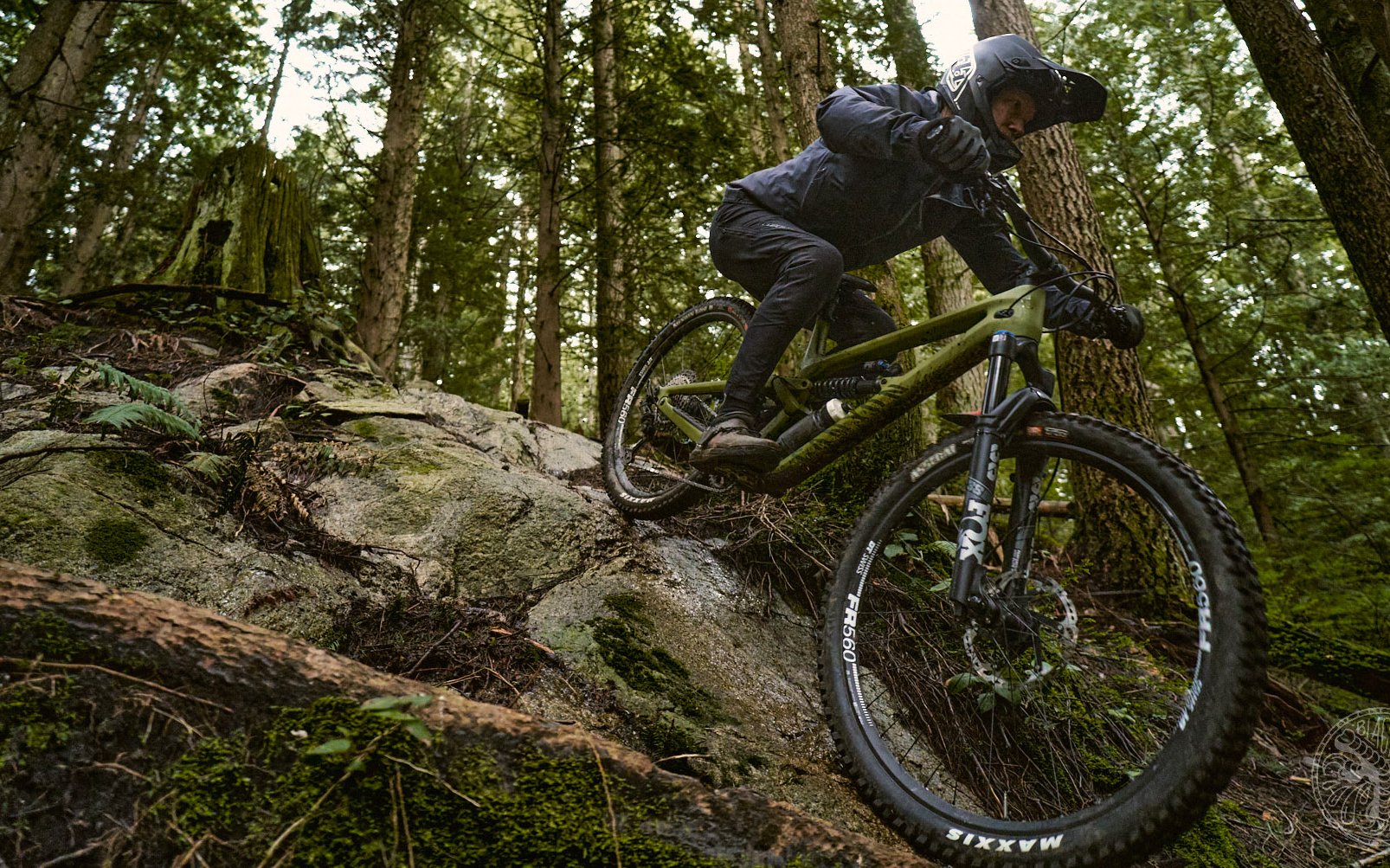
Review
A Tale of 2 Mullets: Canyon Spectral and Torque
Canyon has a lot going on these days. They have been releasing new and exciting bikes on a regular basis in 2022. First they came out with the versatile Spectral in many different formats, then the Torque long travel machine and most recently the revised and race-focused Strive. This review will talk about both the Spectral and Torque mulllet versions.* I have been riding both of these back to back and have come to understand their different natures. The first look at the 2022 Torque Mullet can be found here 2022 Canyon Torque CF8 First Impressions.
*Both of these bikes are available in 29, mullet and 27.5
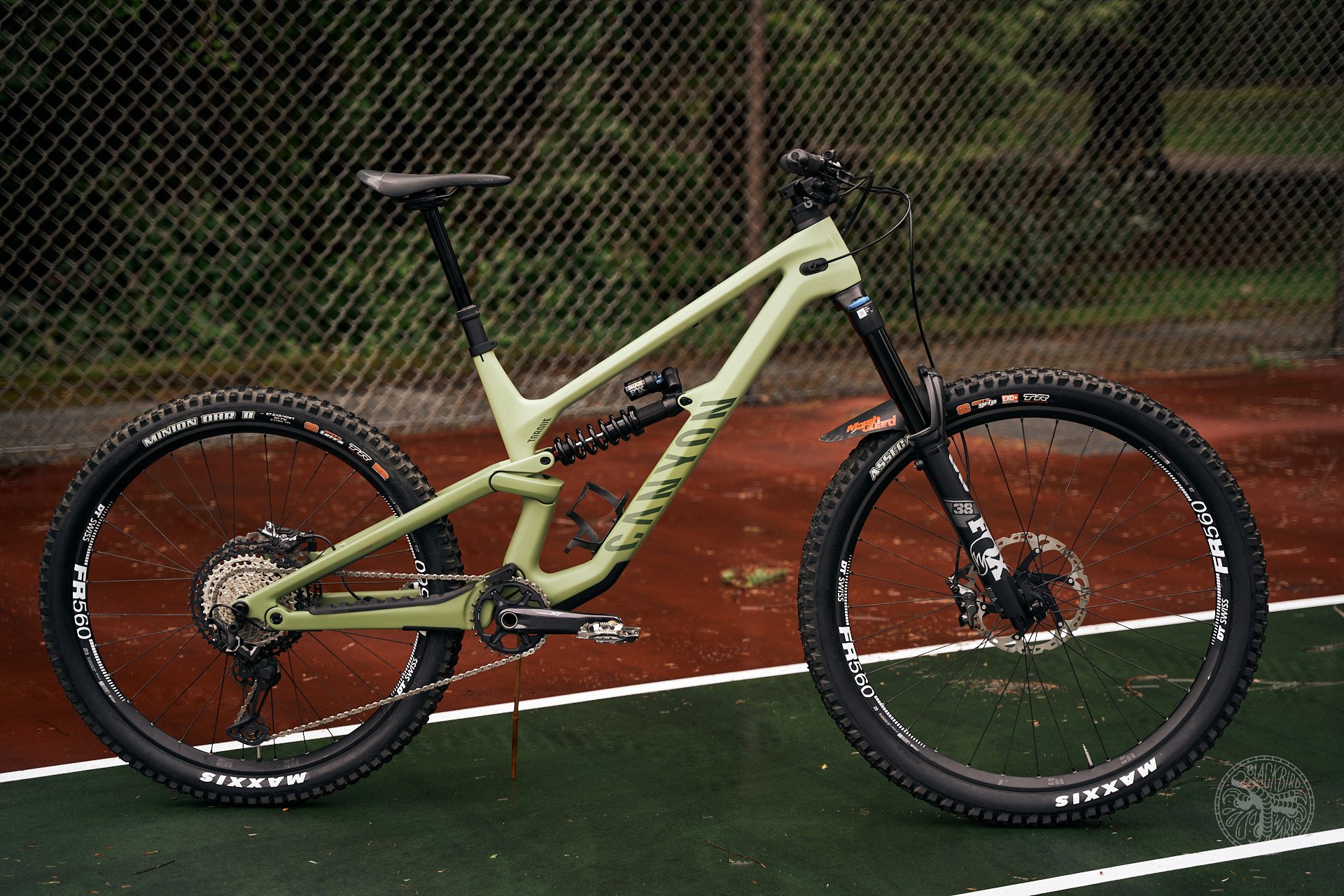
Ready to play ball. Photo - Deniz Merdano
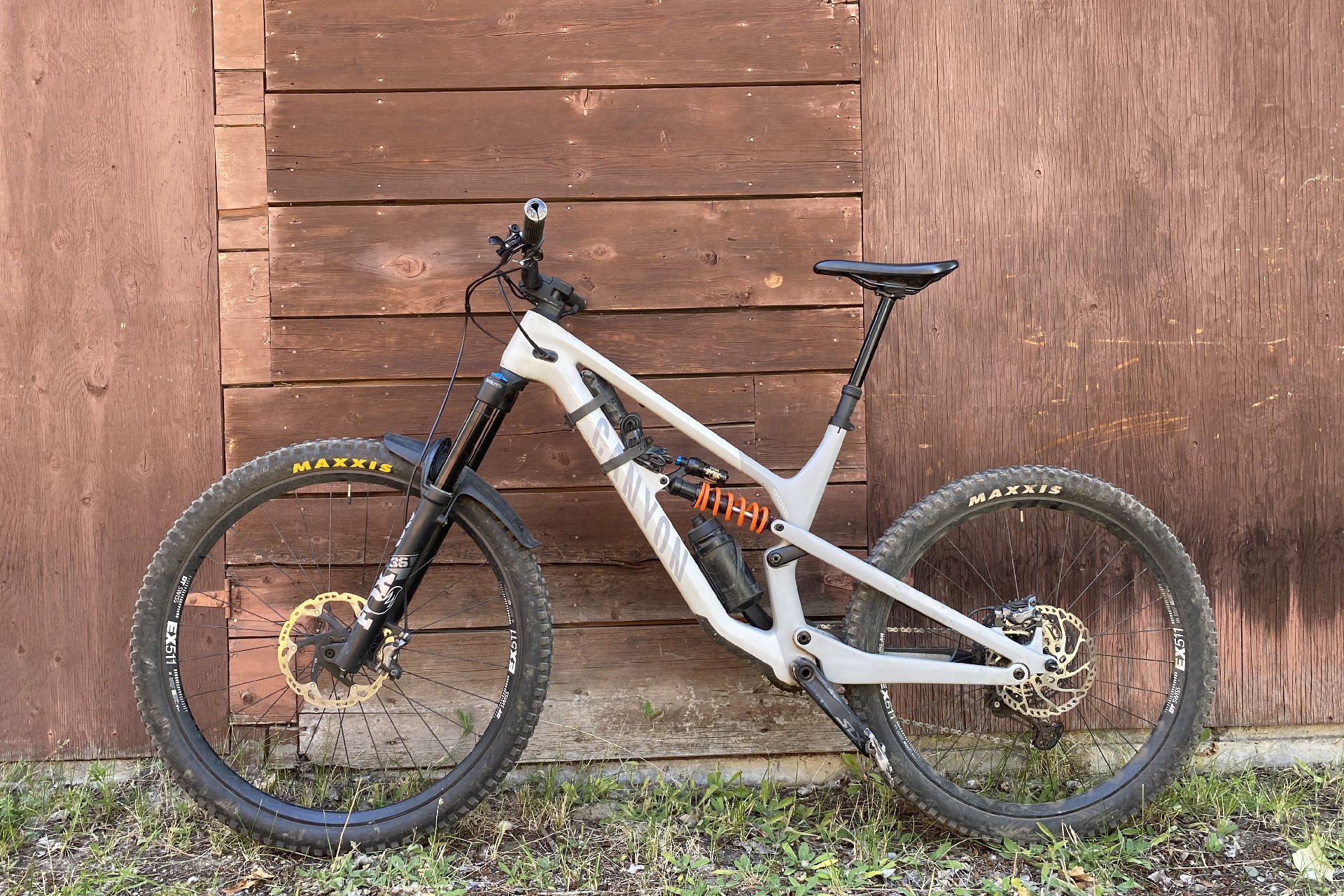
All business behind the barn. Photo - Cam McRae
Lay of the Land
Working hard one day at the NSMB headquarters, downtown Vancouver in the Bentall Centre, we were discussing why grouping the Spectral and Torque mullet reviews together made sense. The obvious reasons include the fact that both of these bikes have a very similar design (suspension and geo), wheel size and they both use a coil rear shock. The other reason is that the conversation about how much travel your next bike should have is very common. The question can be posed as underbike vs overbike, playful vs plow, climbing prowess vs descending etc., but almost every time someone wants a new bike they ask: how much travel should I get? The choice between 150 and 170 mm in the rear is particularly relevant.
Some of the steeper trails on Cypress or Seymour are ridden every day on bikes that range from 150-170mm both front and rear. So all of these bikes (trail, enduro, freeride) will get the job done. In this case, the Spectral fits nicely in between trail and enduro and the Torque fits in between enduro and freeride and therefore makes a great comparison.
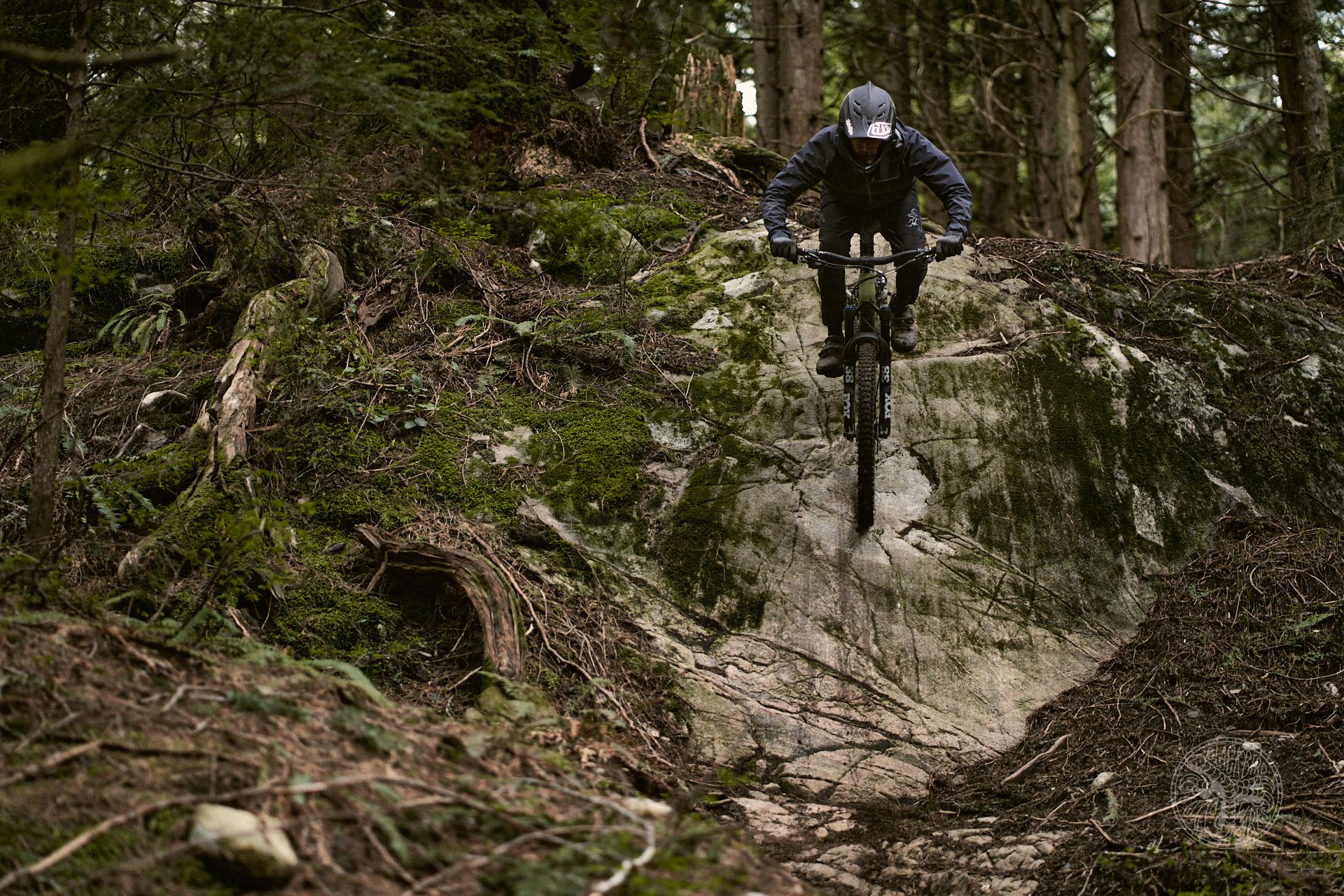
The Torque spent more time close to home... Photo - Deniz Merdano
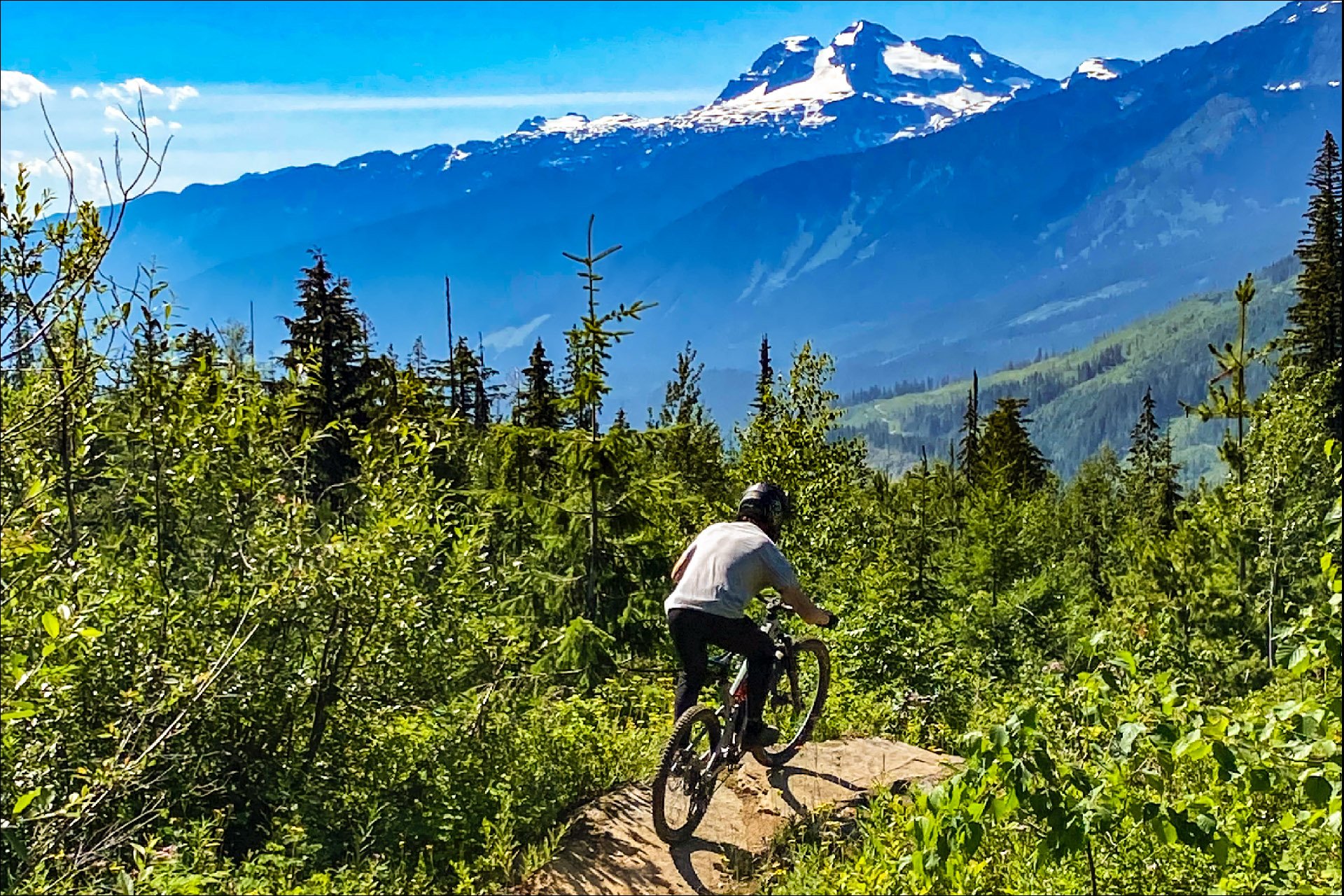
While the Spectral went travelling around B.C. Photo - Michelle Dunn
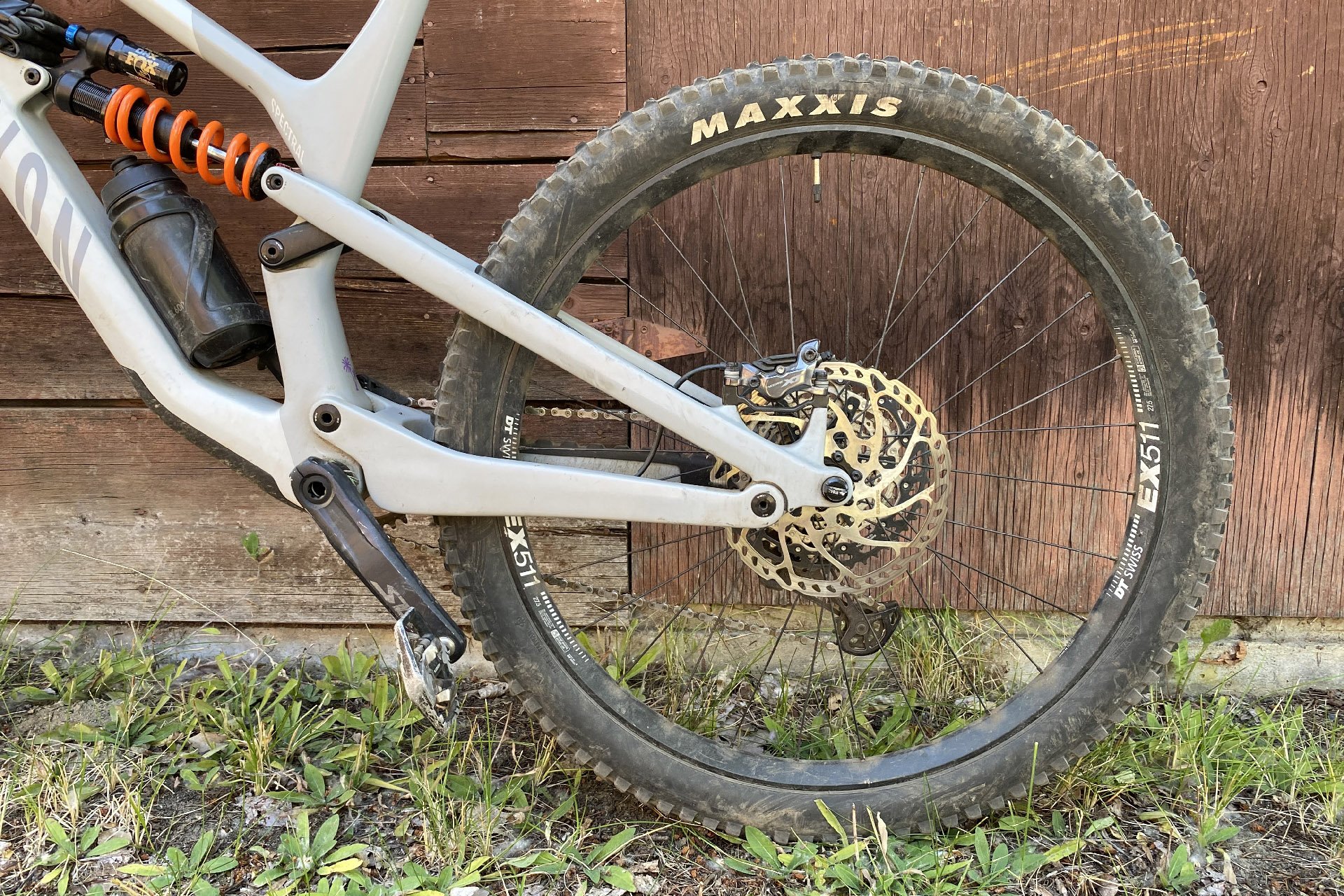
With aluminum rims it's hard to do much better than an EX511. Photo - Cam McRae
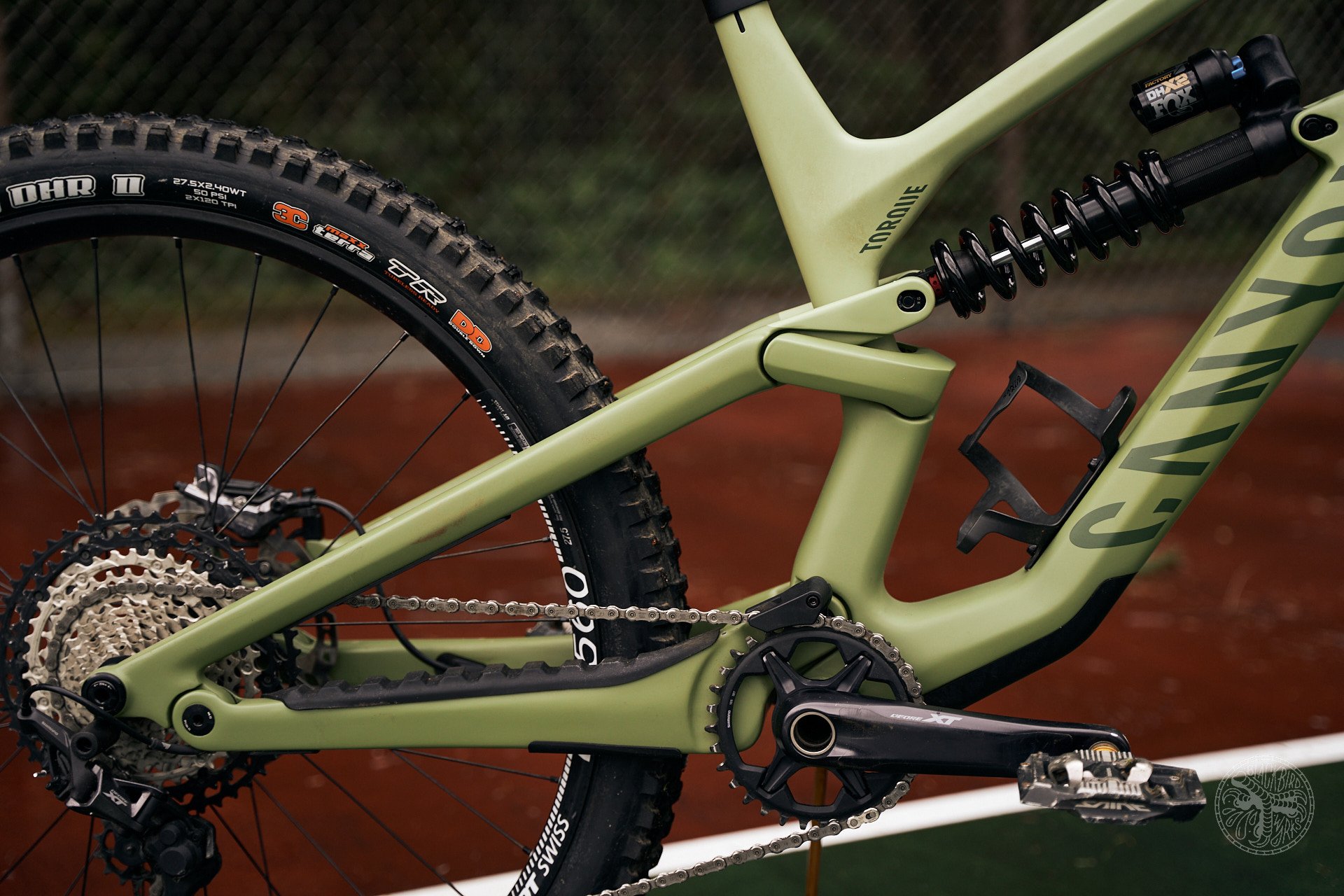
Maxxis DD casing right out of the box. Very nice. Photo - Deniz Merdano
The Bikes
Both the Spectral and the Torque use Canyon’s version of a Horst Link called Triple Phase. Rear travel on the Torque is 175mm and 150mm on the Spectral. The Spectral uses the relatively new trail-focused Fox DHX coil and the Torque is on the gravity-oriented DHX2 coil. The Spectral Mullet has a 160mm Fox 36 and the Torque has the 170mm Fox 38. They both come with the excellent Performance Elite level forks that wisely forego the Kashima to keep the price down but have the Grip 2 damper. The drivetrains are similar with Shimano XT derailleurs. The Torque surprisingly has both XT cranks and cassette while the Spectral has SLX.
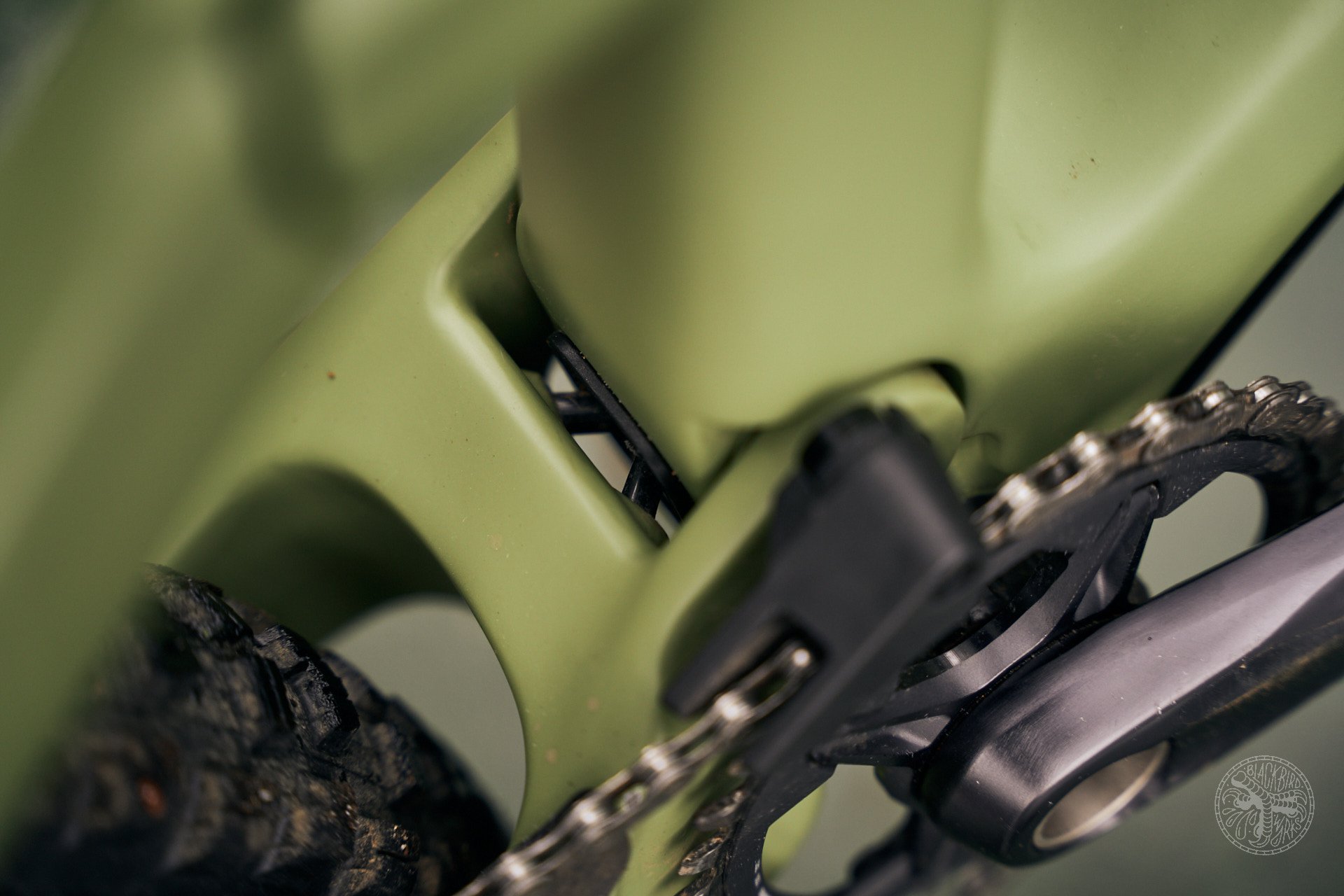
Pivot layout on both bikes is clean and pleasing to the eye. Photos - Deniz Merdano
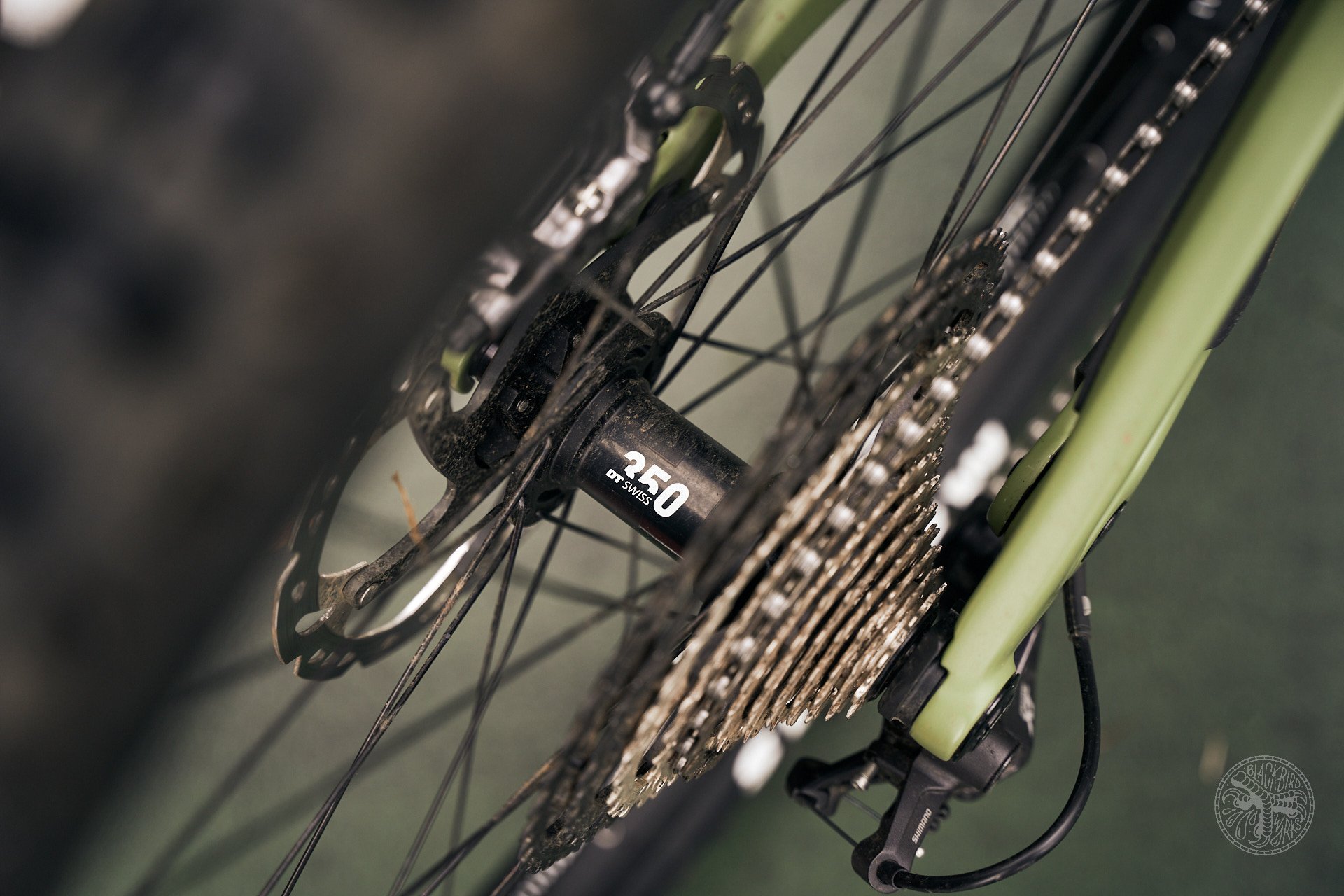
DT 350 hubs. Always a big bang for the buck.
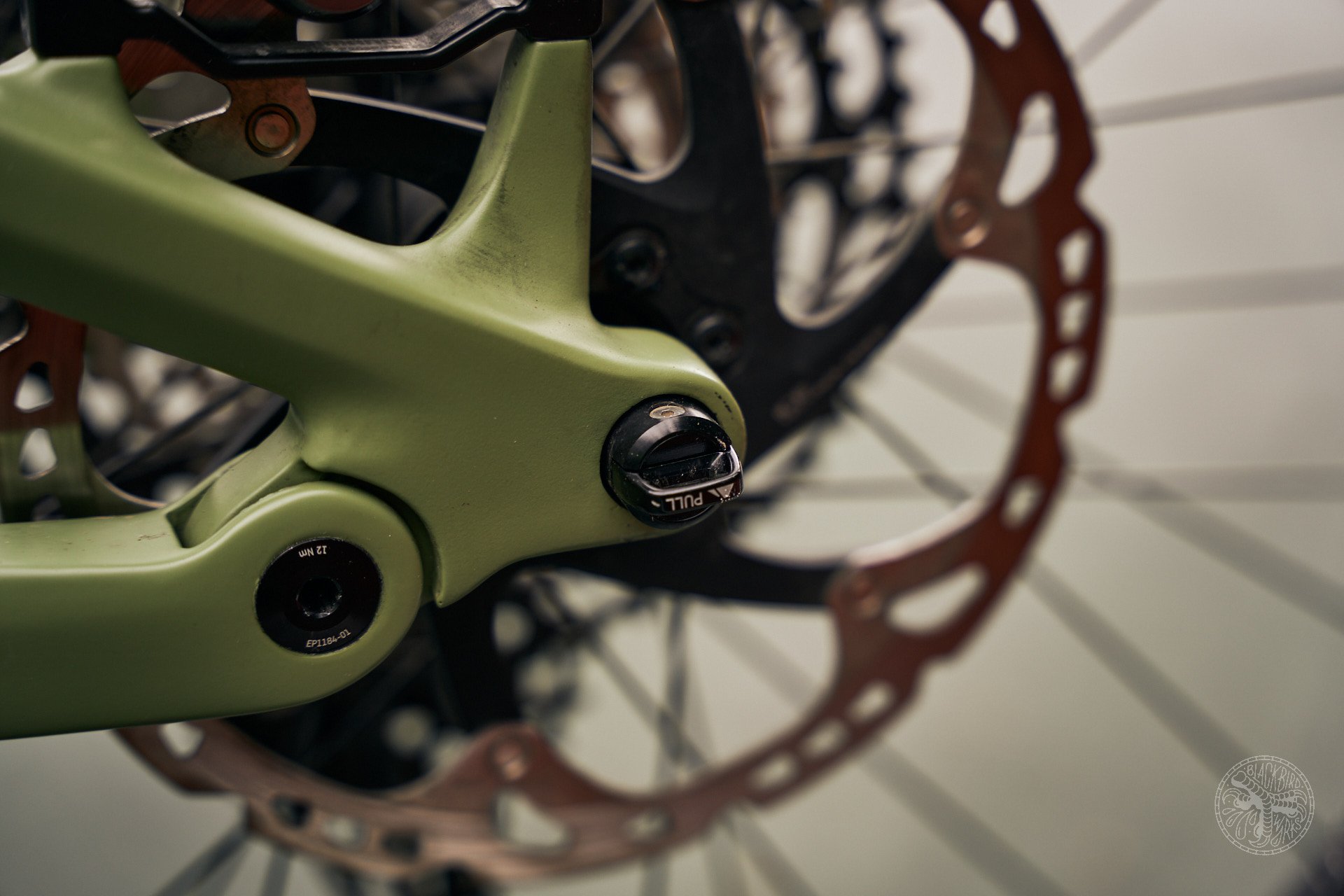
The Canyon pull out rear axle release design doesn't get old.
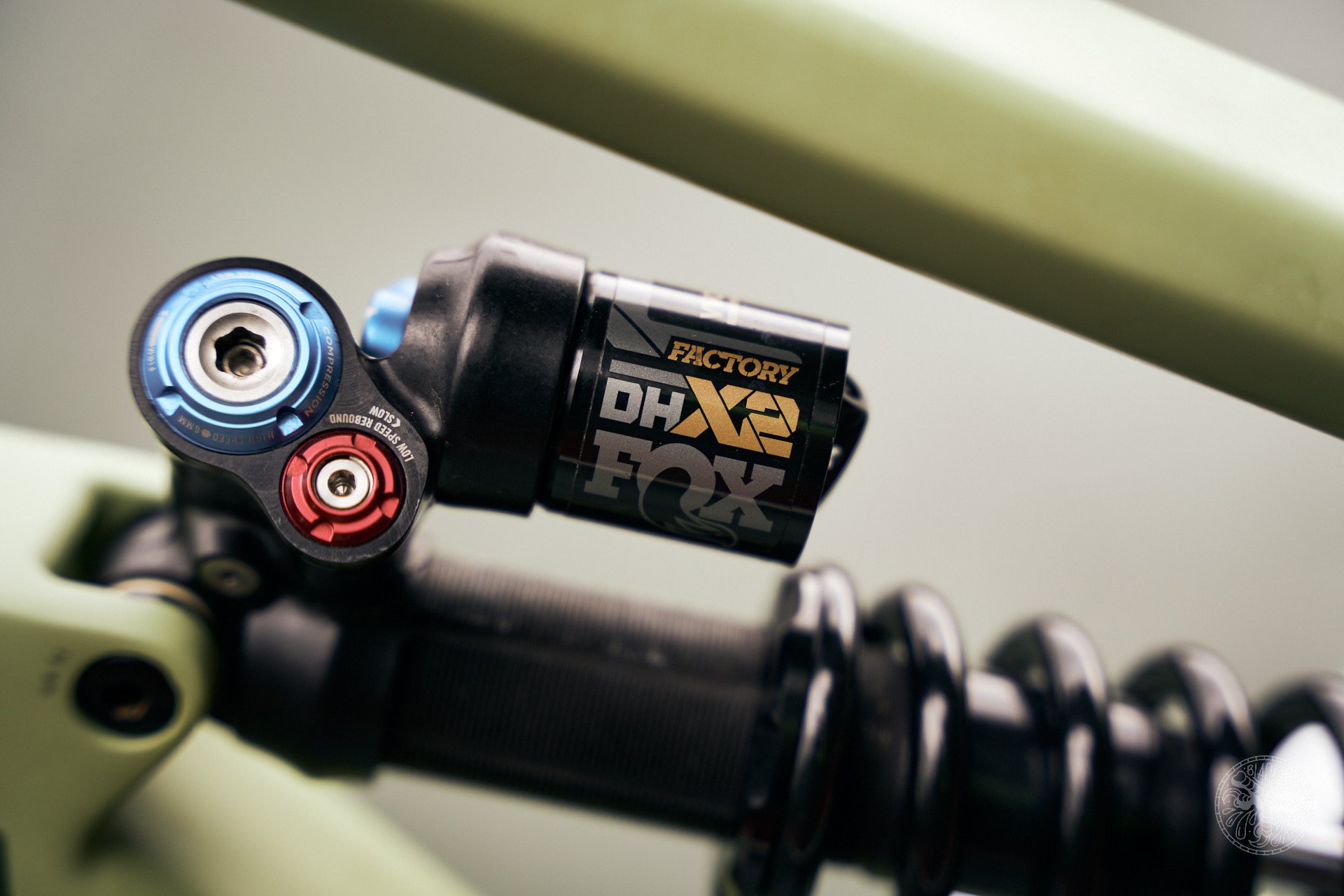
Same as you find at the DH World Cup.
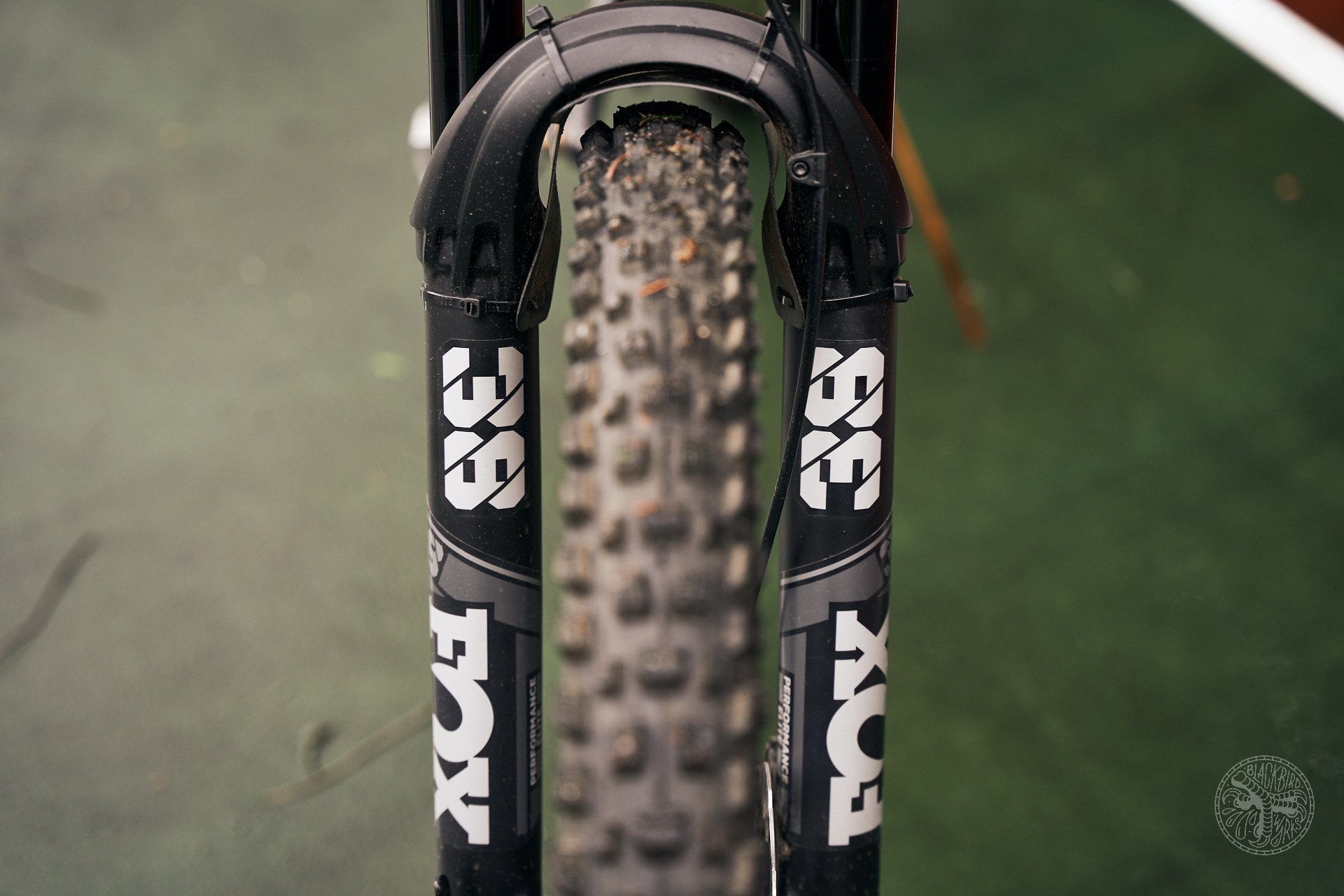
No Kashima but still rocking the top of the line Grip 2 damper.
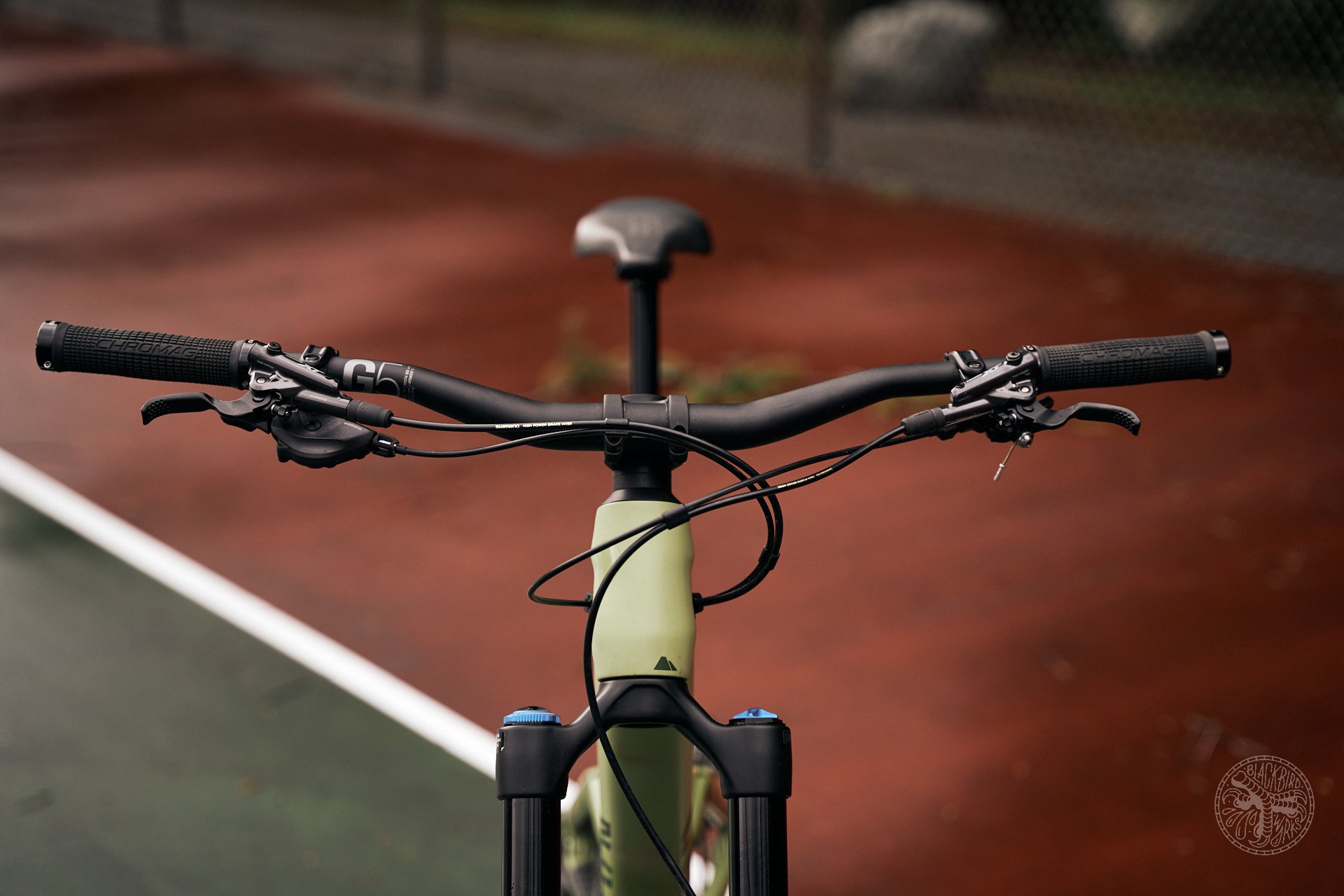
Form and Function
Brakes on both are Shimano XT 4-piston with 203mm rotors. The large rotors are expected on the Torque but are a nice treat on the Spectral. On both bikes however the larger rotors are compromised by coming stock with resin pads. For mostly dry conditions I would say it's fine to run them until they wear out and then replace with metal pads. However if you’re riding in predominantly wet conditions, I would swap them right off the bat for the metal versions.
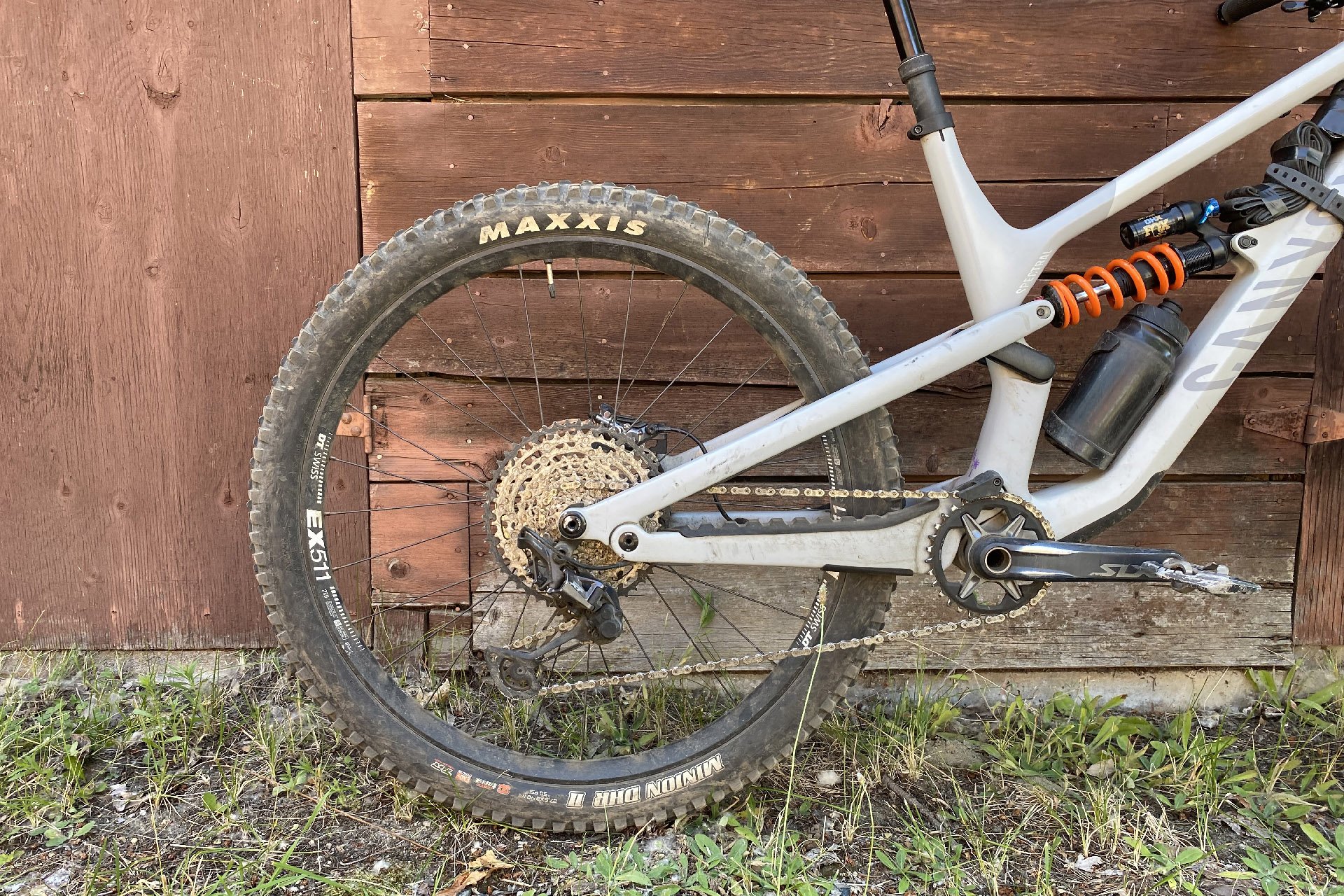
I had better luck keeping this XT derailleur functional than I usually do. Photos - Cam McRae
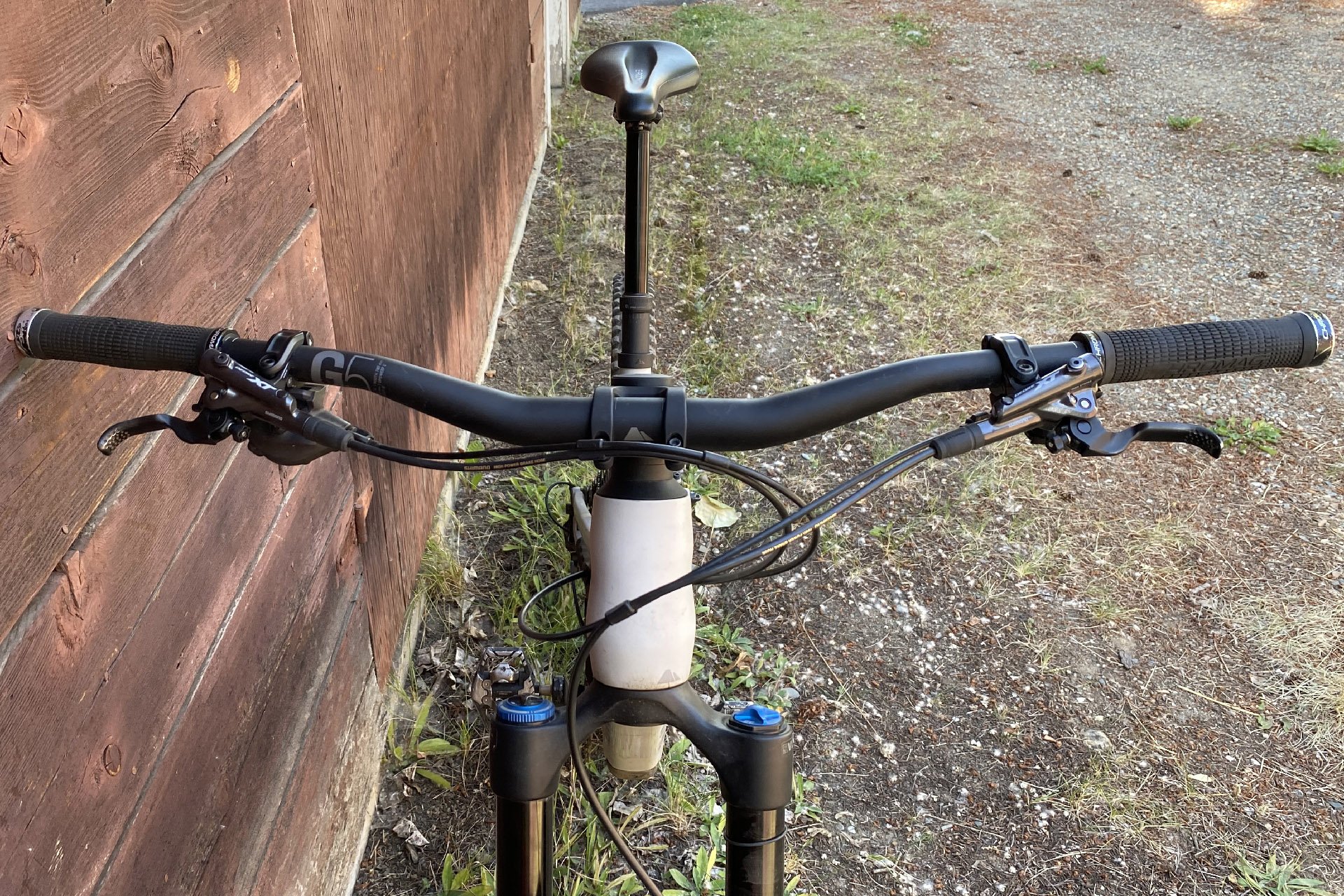
With the resin pads exchanged for metal the XT brakes worked well.
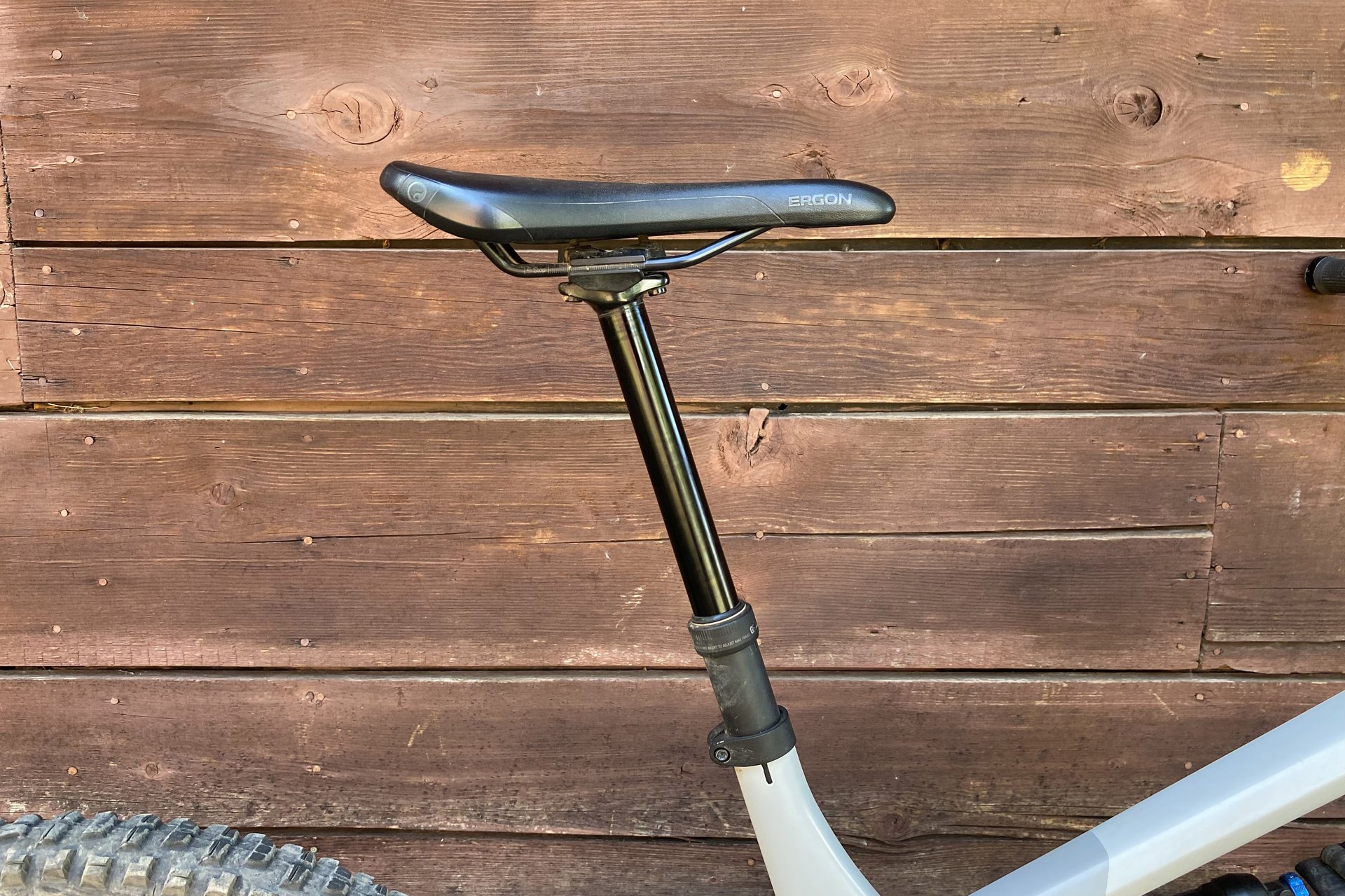
Compared to the 200mm seatpost on the Torque, the Spectral's 170mm was kind of a 'bummer'.
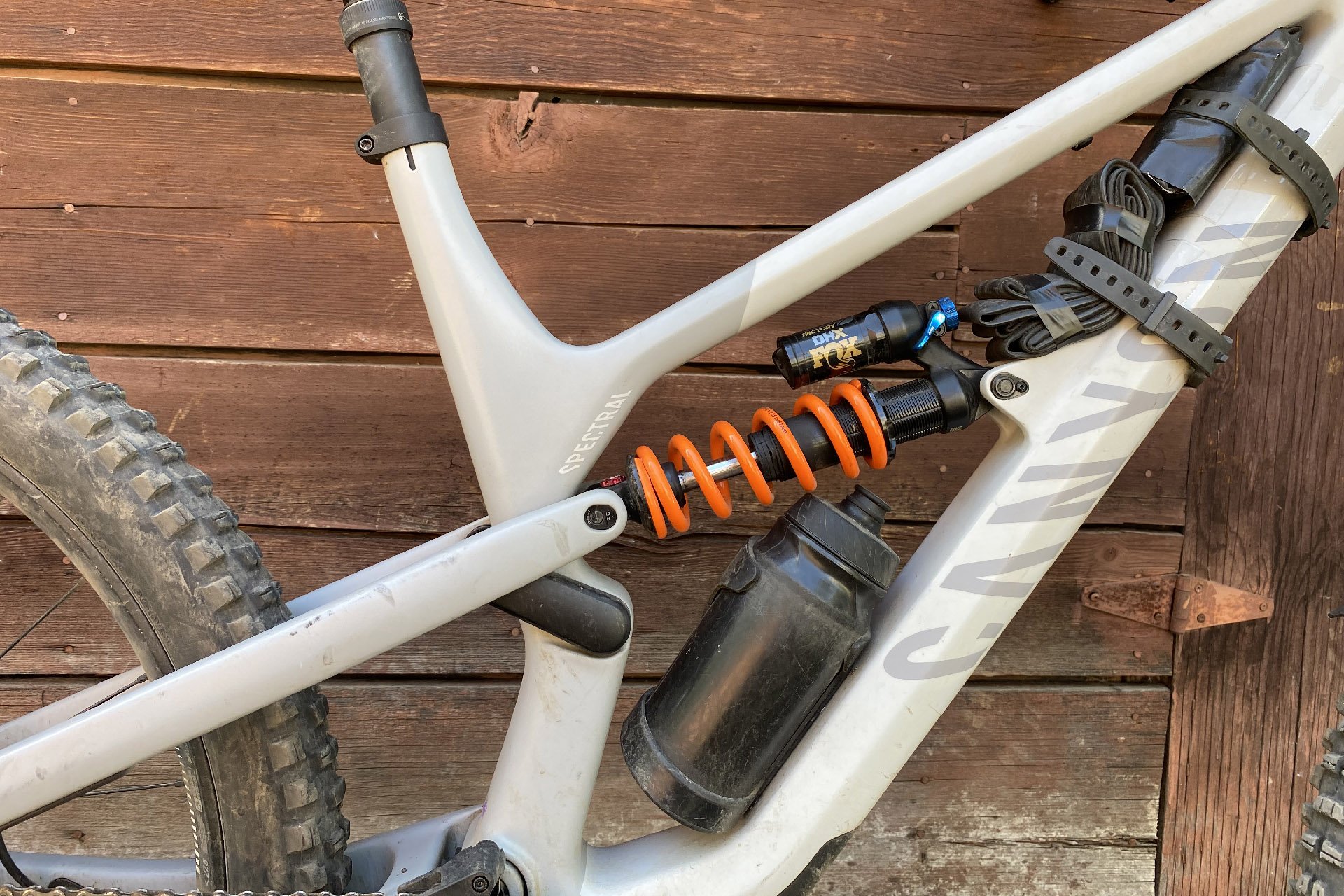
Note that these bikes don't actually come with the lighter SLS springs.
Impressively (again) both come with DT Swiss wheelsets with very nice EX511 rims on the Spectral and the mighty FR 560 on the Torque. Each also has a 40mm stem (an excellent starting point with modern geometry) and Canyon's G5 dropper post but with one significant difference to be discussed later…
Component spec of the Spectral Mullet CF8 CCLCTV.
Component spec of the Torque Mullet CF8
With respect to geometry the head angle is very close between the Torque at 63.5 and the Spectral at 64. Seat tube angle is 77.5 on the Torque and 76.5 on the Spectral.
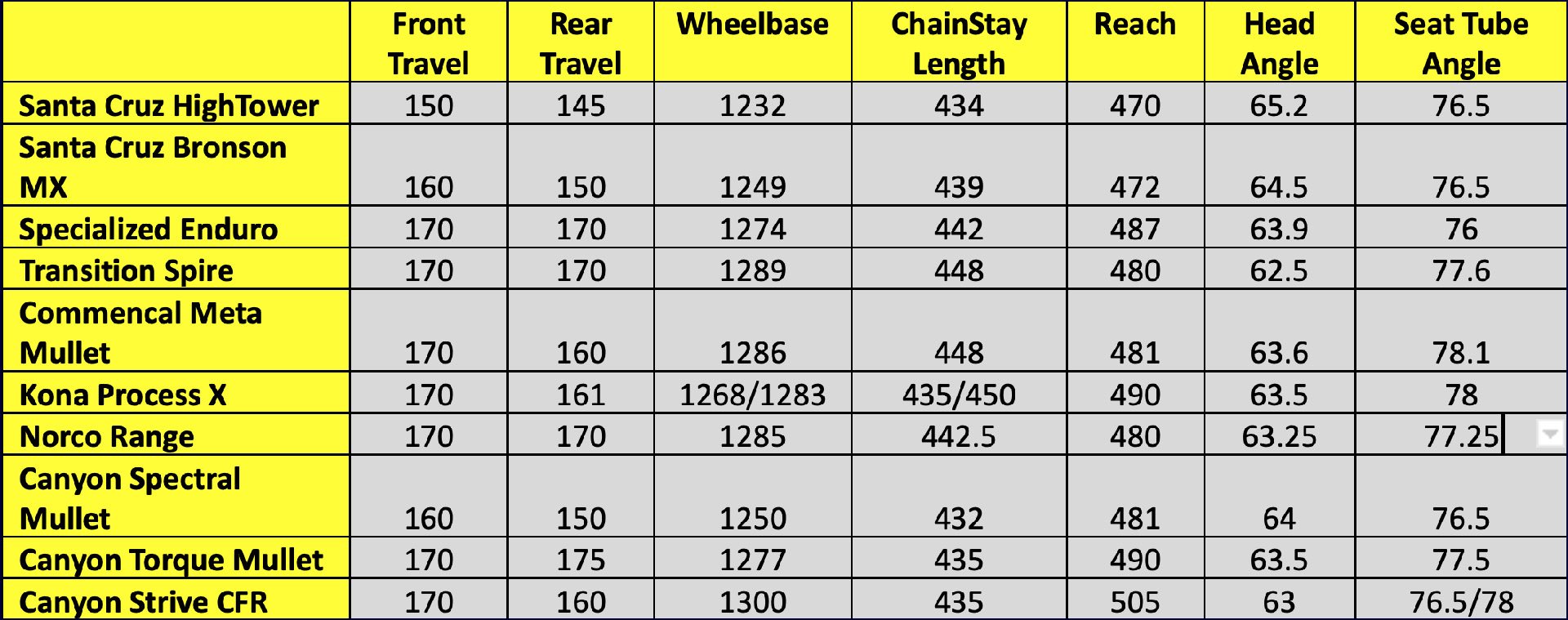
Here are the size large geometry numbers compared to a few others and I also included the new Strive. Just look at the Trump-sized wheel base and front centre on the Strive which I assume is based on the single-minded pursuit of stability. The new Strive First look is here: Canyon's All New Canyon Strive CFR Enduro Race Bike Release
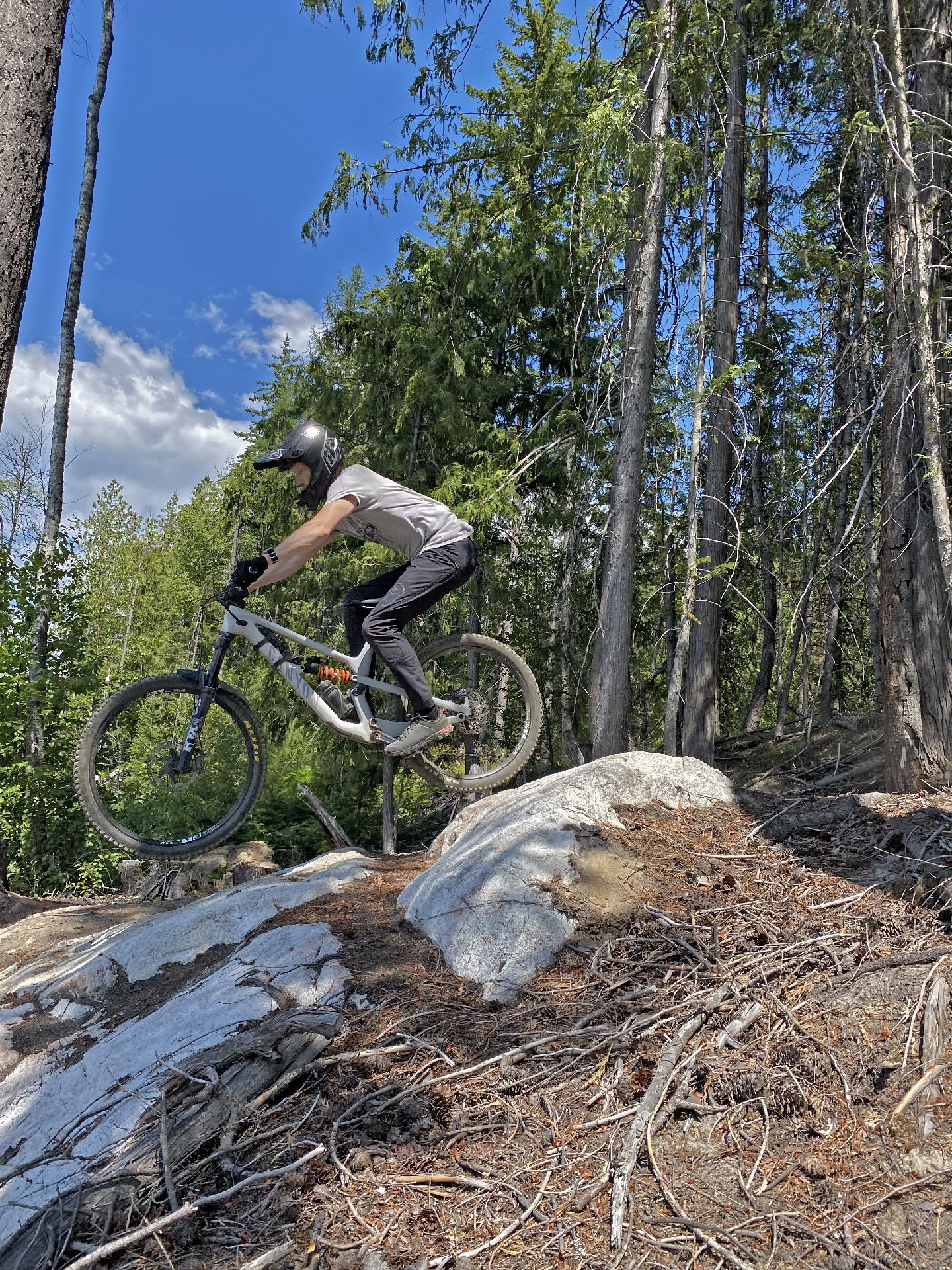
Revelstoke rocks. Photos - Michelle Dunn
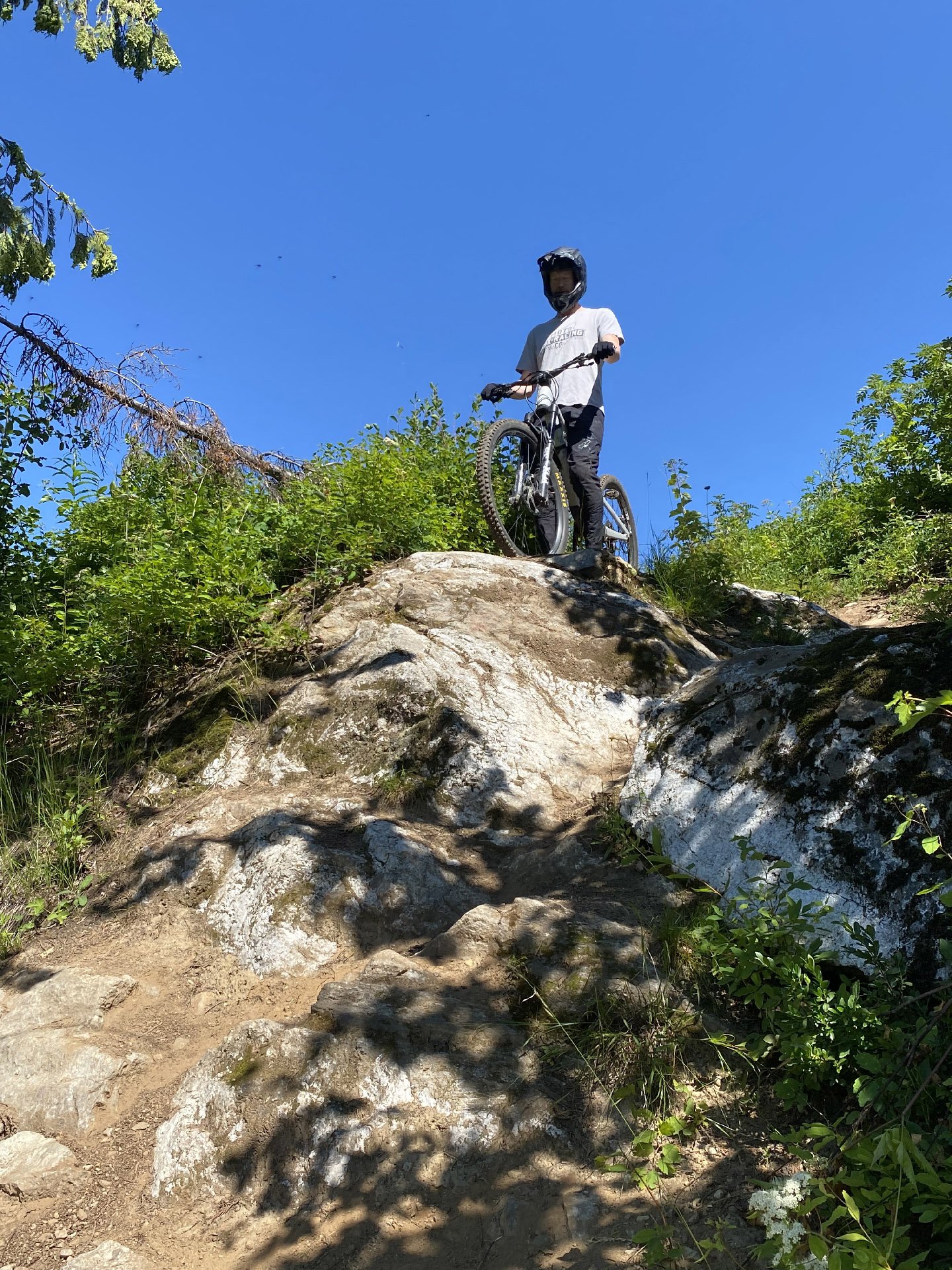
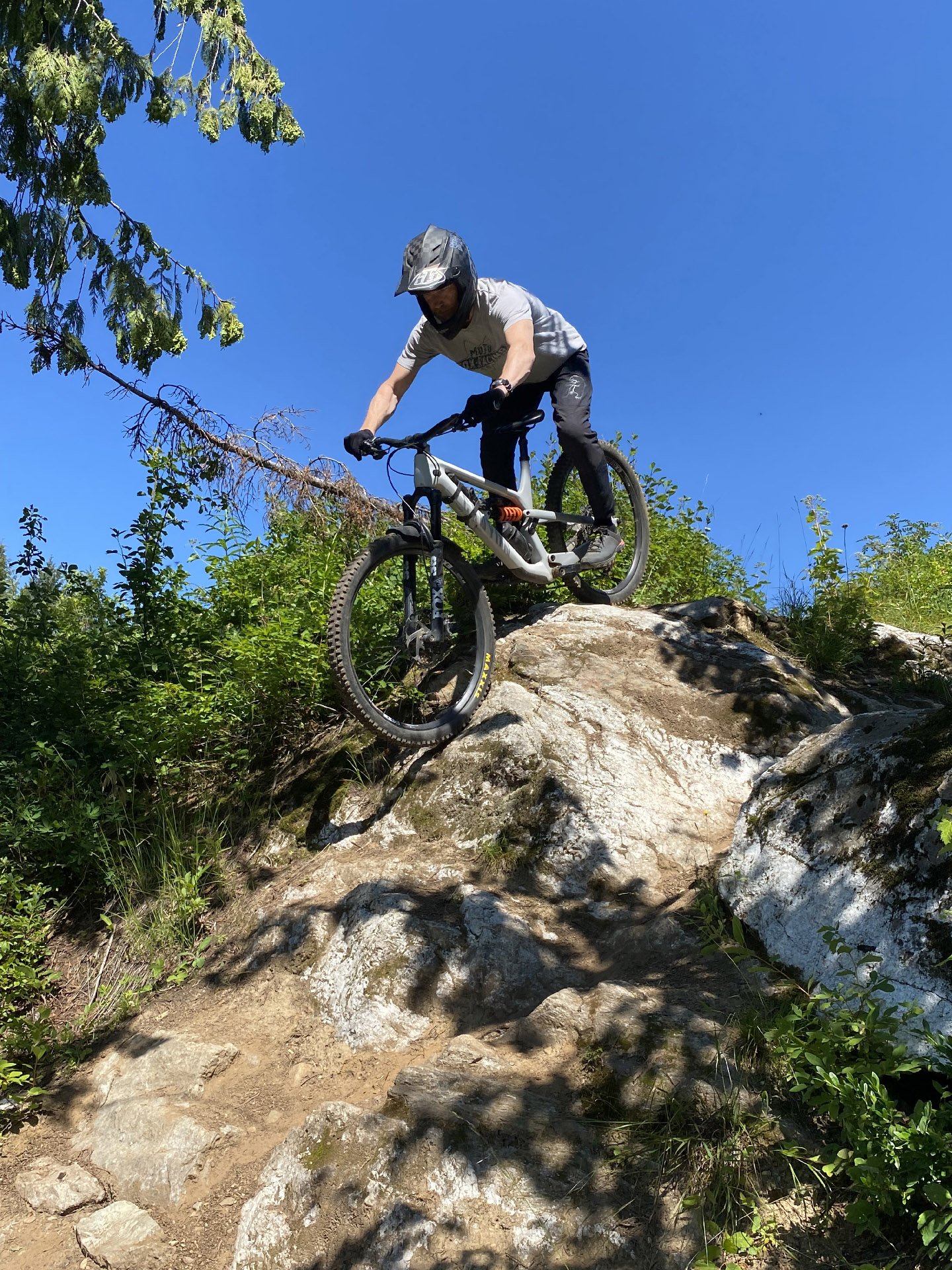
Pause for Pricing
Before moving on to bike set-up and riding, the relatively palatable price of these bikes have to be highlighted. The Spectral Mullet CF8 is 5599 CAD (4899 USD)and the Torque Mullet CF8 is 6349 CAD (5399 USD).
*While Canyon has US distribution, Canadian bikes come from Germany and generally are subject a 13% import duty plus sales tax. Details here.
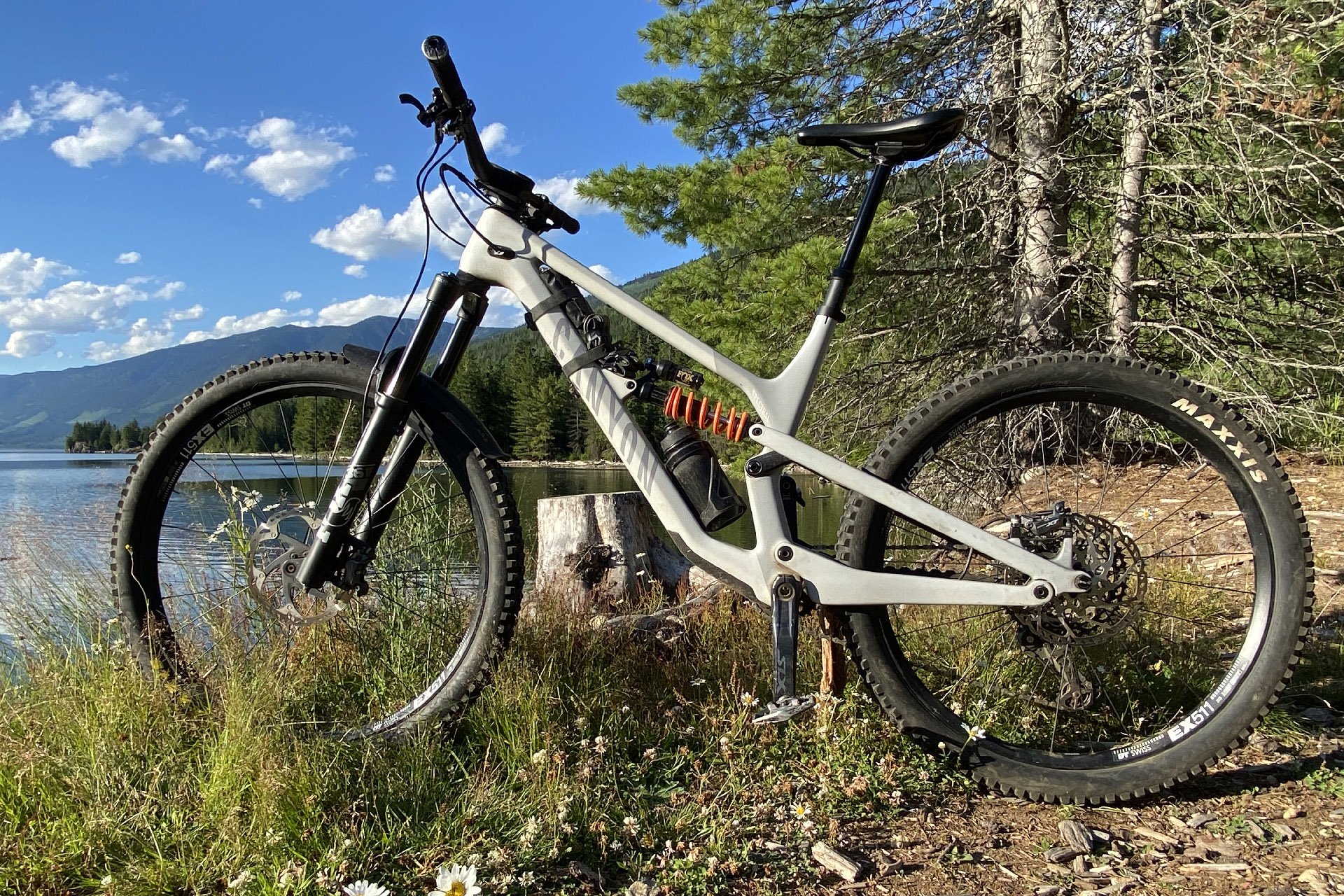
Handsome bike A. Photo - Mike Wallace
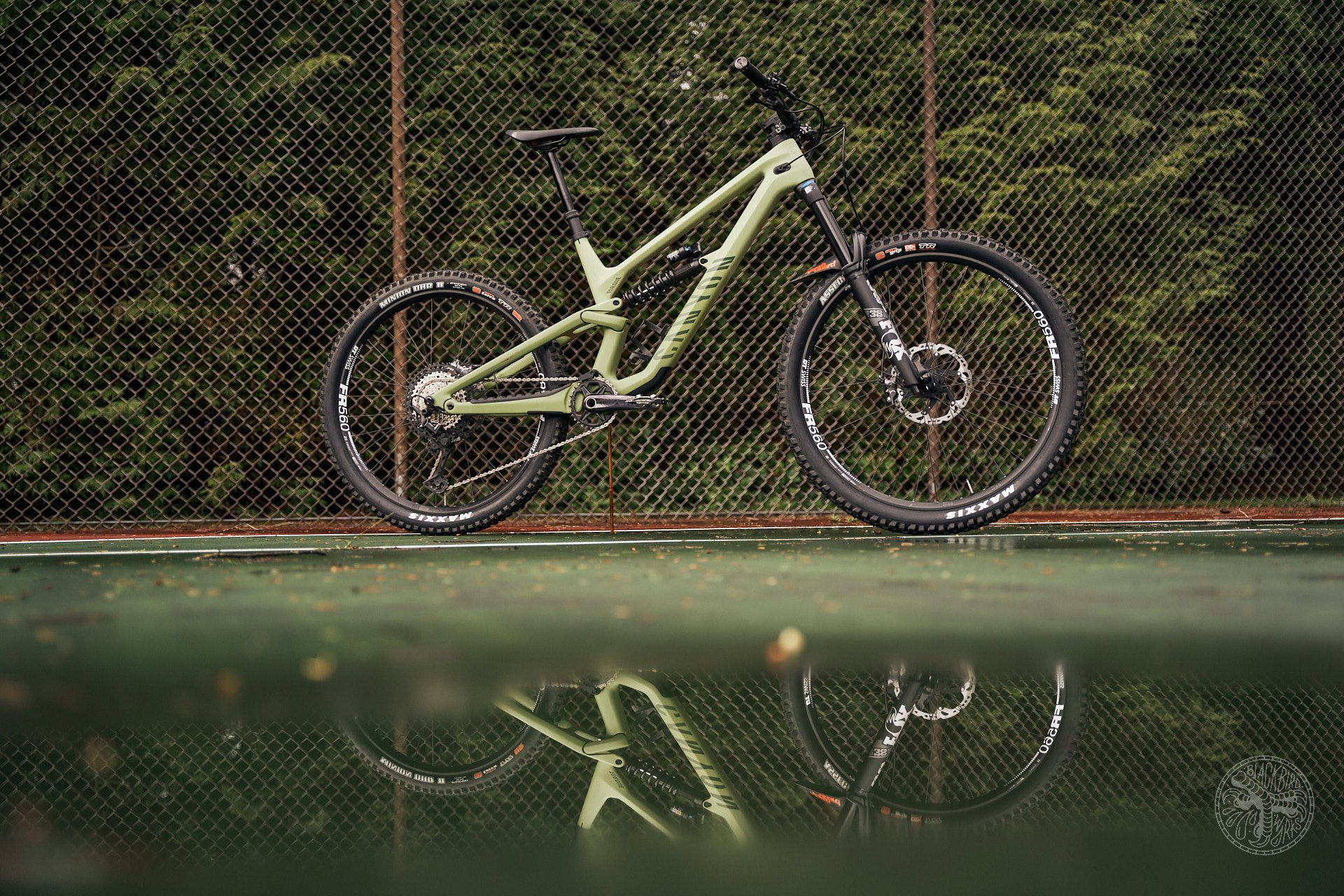
Handsome bike B. Photo - Deniz Merdano
Set-up
Shorter travel bikes (the Spectral in this case) are always more difficult to set up for me as there is less to work with. In other words you always walk the line between making it stiff enough to take the large hits and maintain high speed stability, with some degree of small bump compliance. My weight without riding gear is 172 lbs. I zeroed in quite quickly on 91 psi in the fork and a 475-lb rear spring (I used a SLS spring which comes in 25-lb increments but doesn’t come with the bike) but I did have some struggles with setting up the low speed rebound. It's been quite a while since I rode a non DH bike with a coil shock. I set it up by feel like I normally do. The result was that the rebound ended up being so slow that I couldn’t get the bike off the ground, cased a small gap on my first ride and crashed. One conclusion is that I seem to approach unknown and risky situations with the brain of an 8-yr old. The other conclusion is that modern coil shocks require higher rebound rates than in the past.
For the Torque I went with the fork at 91 psi with 2 tokens, a 450-lb rear spring with both the high and slow rebound knobs set at 2 clicks faster than recommended on the Fox website. It also took me a while to get the rebound dialled in on the Torque. In this case the bike felt like it was spiking up when riding high speed consecutive hits but after twisting the knobs the bike has felt great.
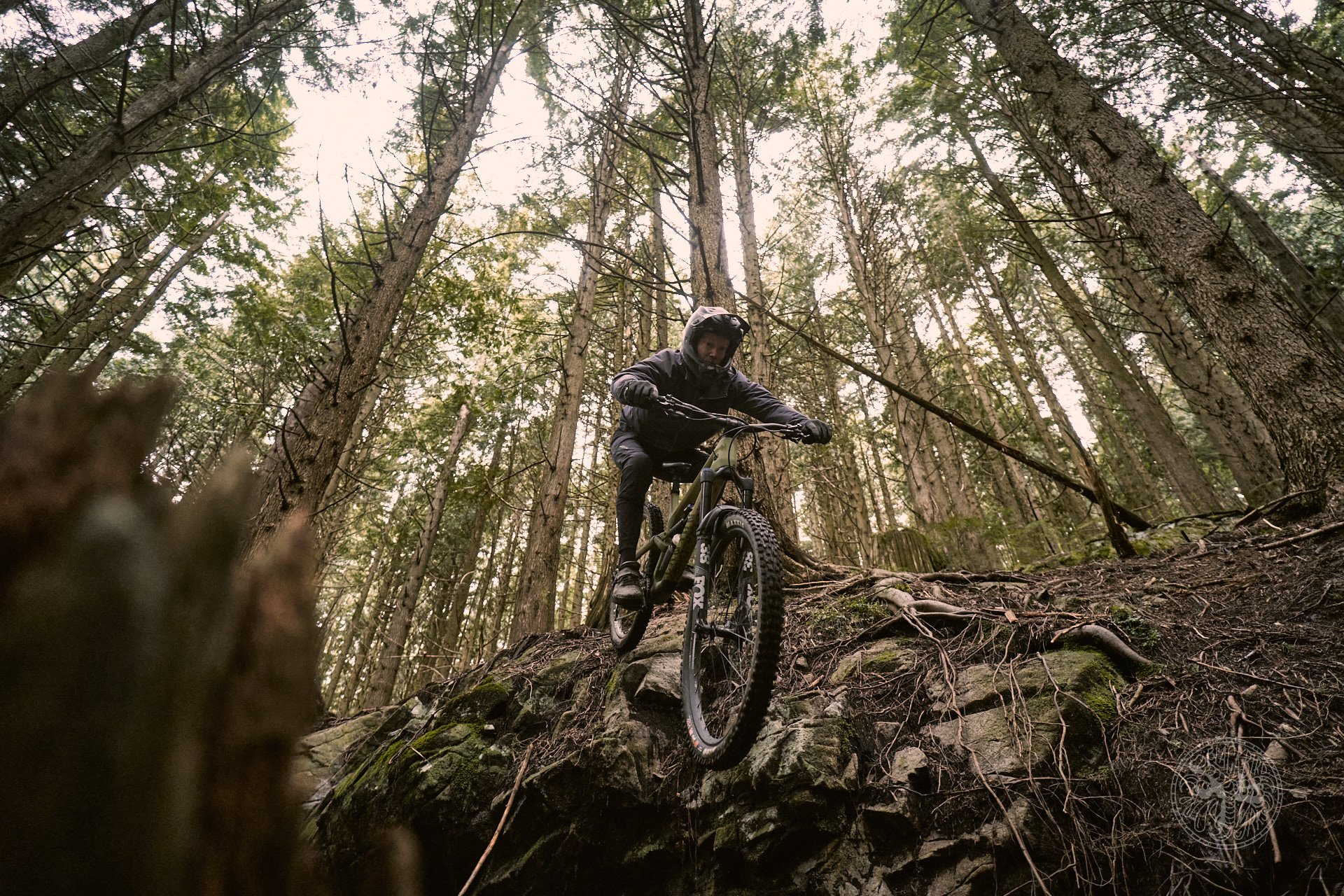
Big 29" wheel and big fork out front to keep things upright. Photo - Deniz Merdano
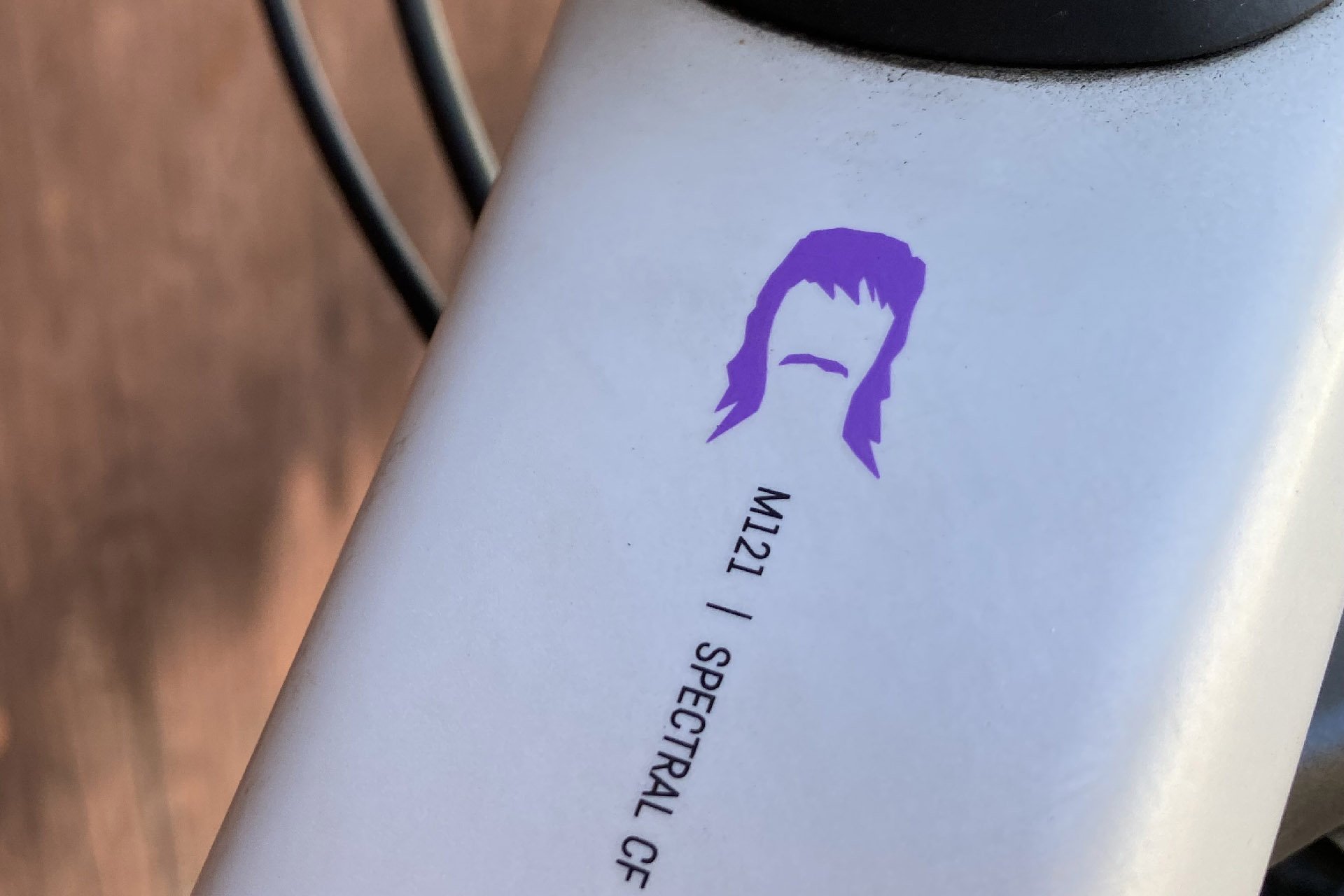
Canyon even lays out the recommended haircut for the Spectral CF8 CLLCTV. Photo - Cam McRae
Riding the Spectral Mullet
The Canyon Spectral Mullet CF 8 CLLCTV is a very capable bike. The combination of 64-degree head angle, 150/160mm rear/front travel and coil rear shock produces impressive results. As we have said numerous times, a 160mm fork is good for all but the steepest and roughest trails. I rode this bike in a lot of different situations and terrain from the steeps of the North Shore to the flow of Kamloops, and the gnar of the Kootenays to the grunty climbs of Whistler. The bike rides very light and efficiently both when climbing and pumping the flats. With the suspension set quite stiff, the bike is very settled in the rough stuff. My experiences on other bikes makes me believe a lot of the stability comes from the coil shock in the rear and the GRIP2 damper in the front.
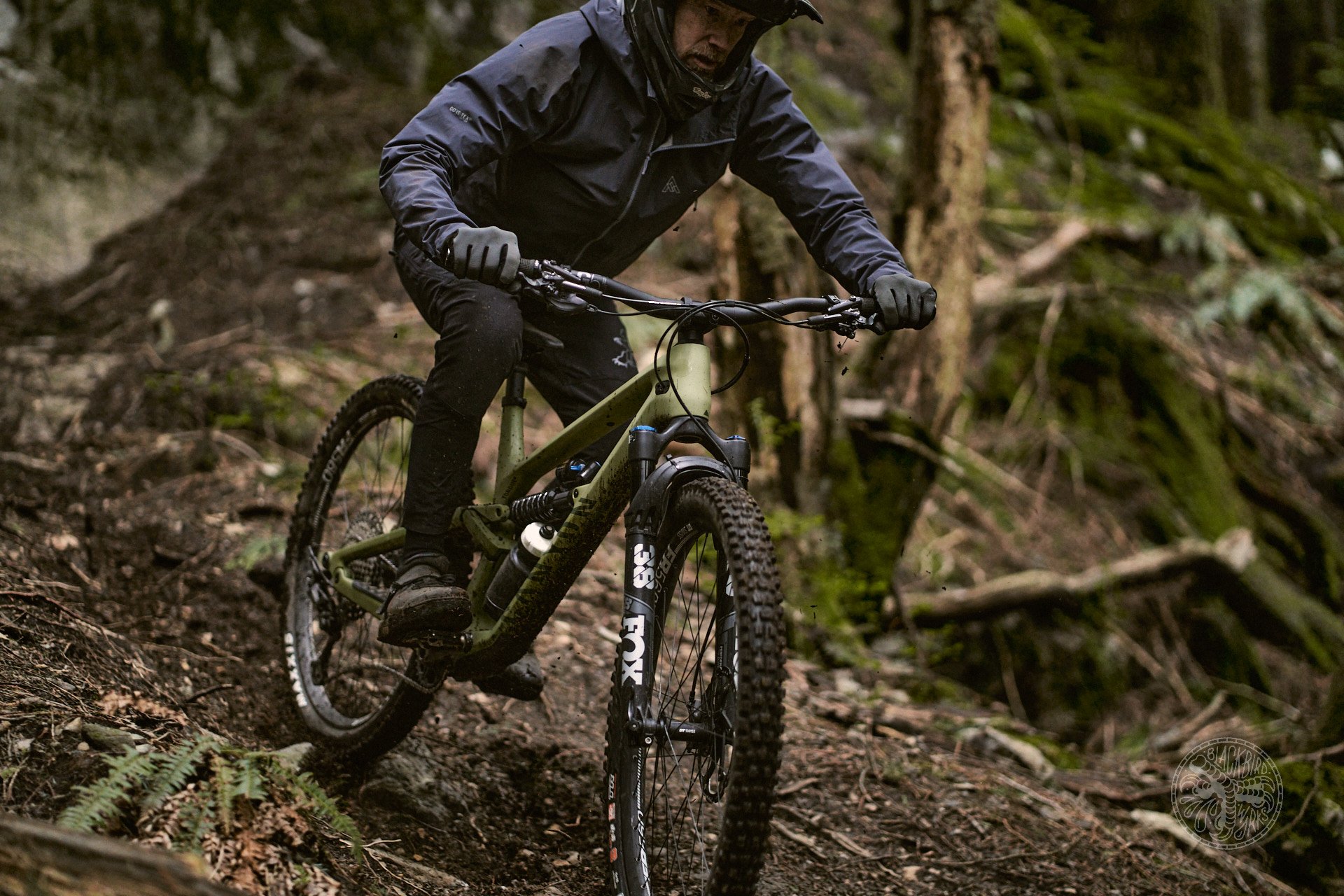
So much fun to ride this bike in the steeps. Photo - Deniz Merdano
For comparison, the Santa Cruz Bronson is a very similar bike. If you look at the geo chart above you will see just how similar. The major design difference of course is that the Canyon uses a Horst Link and the Santa Cruz is a VPP design. However both are extremely proven and accepted high performing platforms. Looking at the Bronson review here The 2022 Santa Cruz Bronson CC XO1 AXS you can see that my comments on the ride were logically similar to the Spectral. Where it gets really interesting to me is the price difference. Although the Bronson model I tested was more Gucci, the price is 12899 CAD (9,849 USD) compared to Canyons 5599 CAD (4899 USD). Wow wow and wow. I can say that the Bronson did feel stiffer but it was subtle and at gunpoint I'd say the Bronson made it a little easier to hold your line. The Bronson also had carbon wheels vs the aluminum of the Spectral though so that in itself could have been the difference. The Spectral is a very supportive, agile bike that can be ridden fast on even harsh terrain if you are willing to hang it out there.
I was very impressed with the build quality of the Spectral as well. I put a lot of time in on this bike in both very wet and very dusty conditions and had exactly zero issues with the pivots and bearings (including headset and bottom bracket). I would go as far as to say that the Spectral is one of best bikes I have tested when it comes to mechanical durability over an extended period.
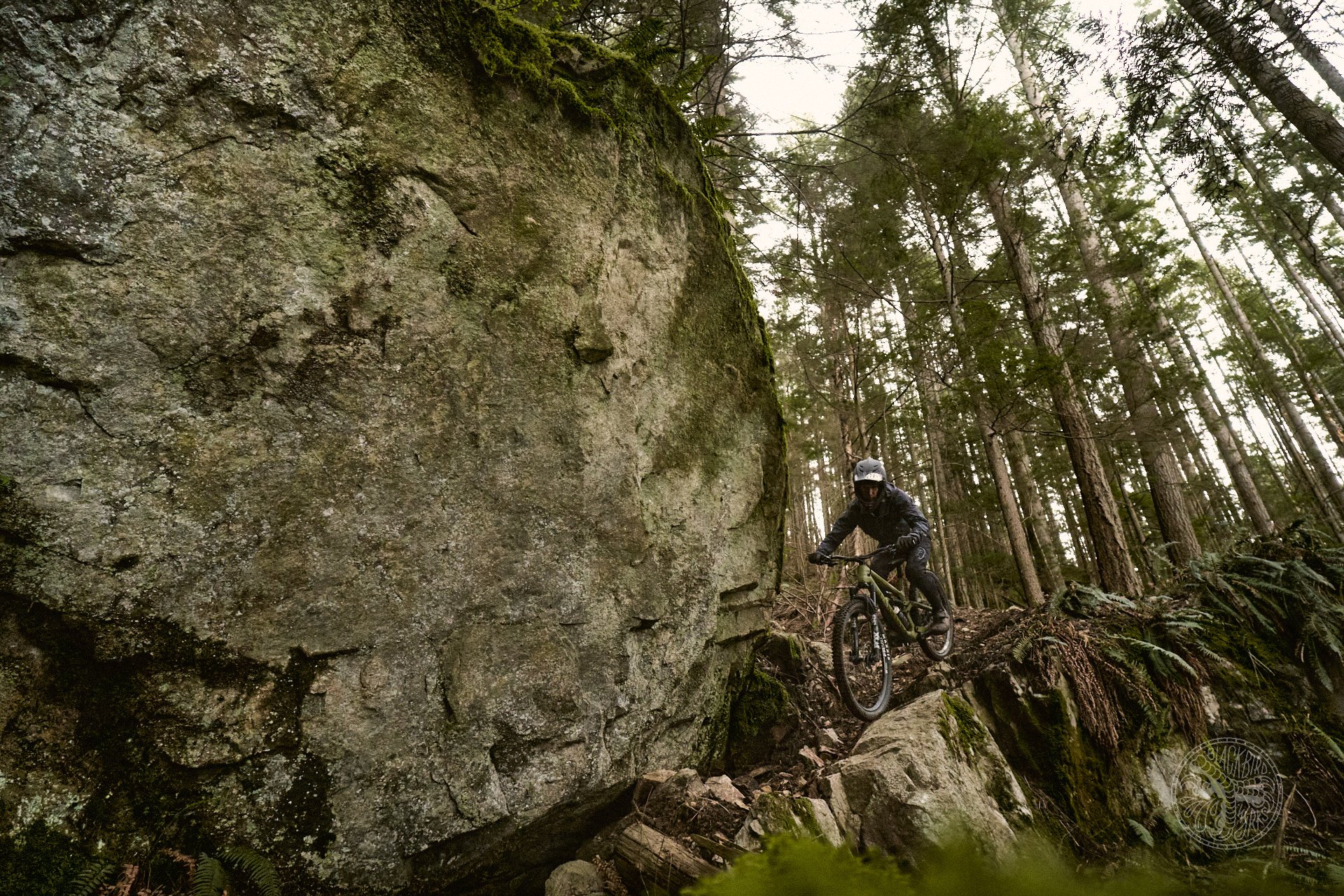
Speaking of rock solid... Photo - Deniz Merdano
Riding the Torque Mullet
In the First Look article in May I wrote “The Torque is a full-on head down charger.” After spending much more time on this bike I still believe that is a good way to categorize this bike. It’s a big bike with a lot of travel. You will notice the mass right away when pedalling out of the parking lot and up your first hill and I used the rear shock climb switch all the time on this machine. The climb switch made the pedalling feel quite efficient considering the amount of travel this bike is packing, however, when the trail tips down and gets steep and rough, the combination of long and low and slack together with the Fox 38 and rear coil makes everything easier and less daunting. You can really hold your line and therefore your speed. Having the Torque along on your ride is similar to having your biggest and toughest buddy come along with you on a big night out. It is excellent at helping you get out of trouble. Almost every time I got a little out of sorts on this bike I was able to rely on the long travel and the Fox 38's stiffness to buy a little time to tidy things up. Having the 27.5" wheel on the back also gives you a little more room to manoeuvre when needed.
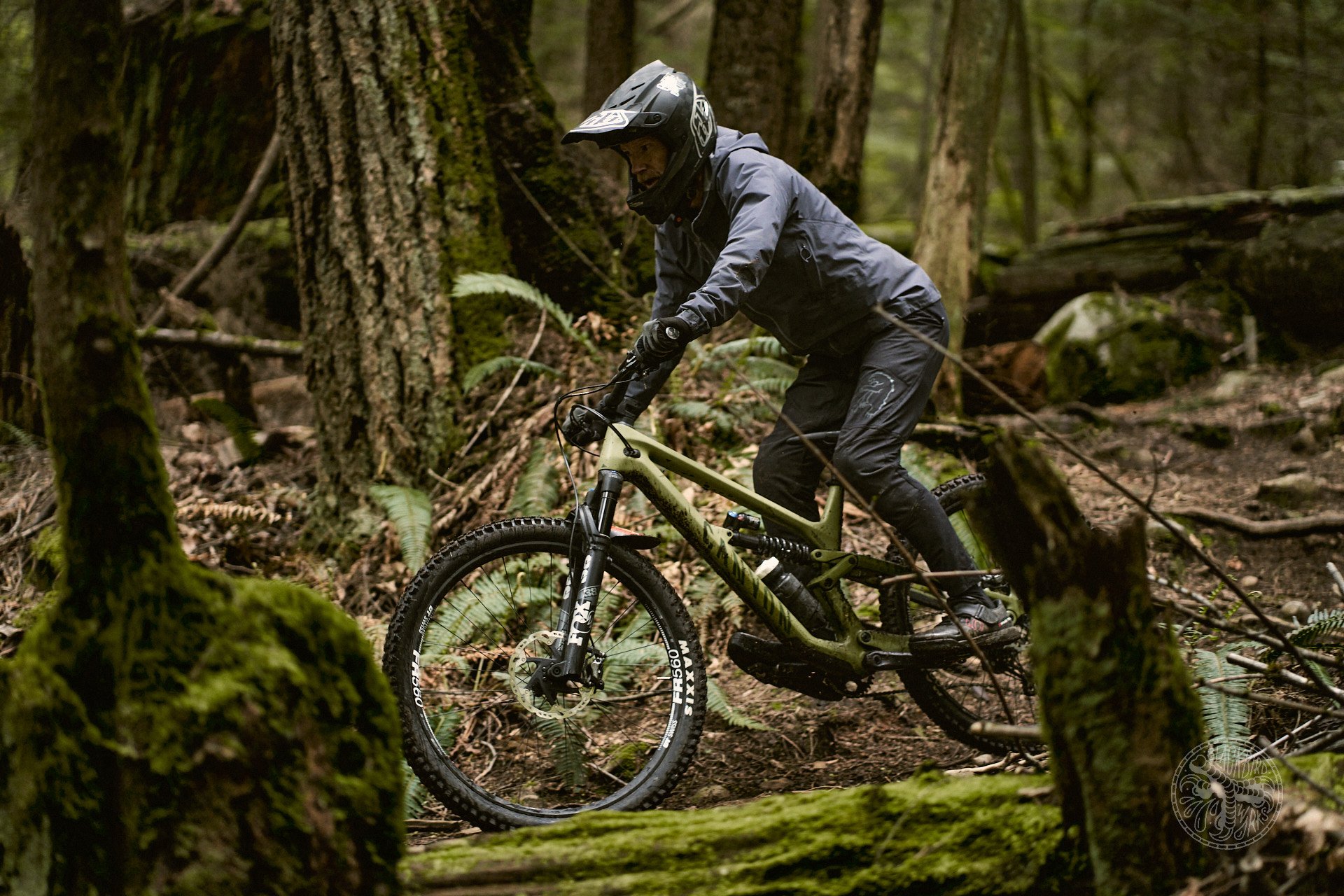
With 200mm seatpost and 27.5" rear wheel there is a lot of room out back to move around. Photo - Deniz Merdano
Spectral vs Torque
Both of these bikes are available in mullet or 29er versions so I think its important to talk about that a little.
Having the 27.5 rear wheel on an Enduro bike in my opinion is not necessary. And in fact you can argue that the rear wheel rollover is not quite as good with a mullet so in a straight line, the full 29er is going to be faster. The mullets are easier to ride, though. They corner with less premeditated effort. On a full 29er you need to start your corner lean a little earlier than you do with a mullet so you need to be conscious of this. Mullets are a little more forgiving too when you need space behind the seat on steep awkward sections. Another way to look at it is that it's very easy to get used to riding a mullet. When you jump on one, everything falls into place quickly, whereas you need to ‘learn’ to ride a full 29er to get the most out of it.
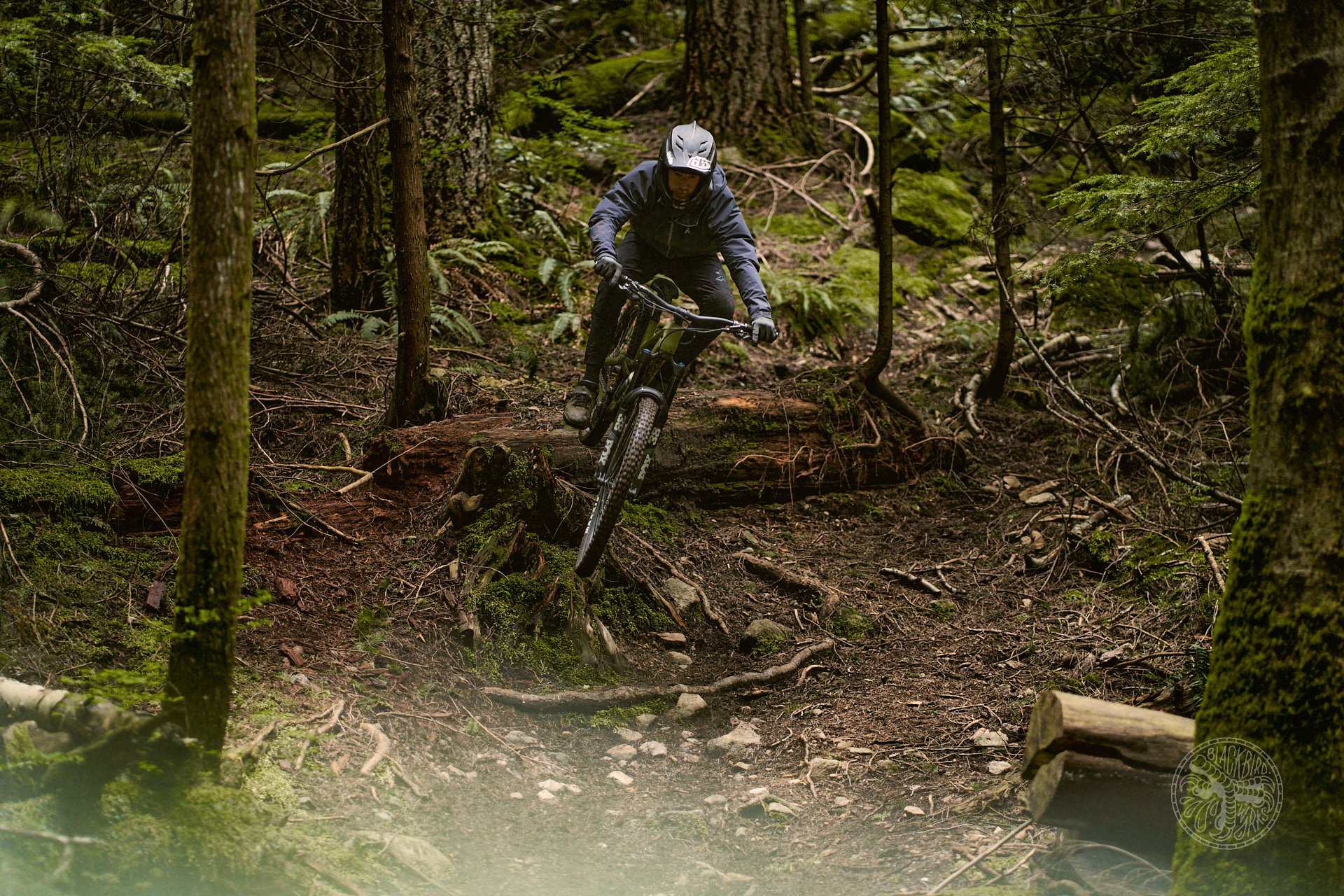
Bye bye log, stump and root. Photo - Deniz Merdano
This is a good time to mention the seat post difference between the two bikes. The large Spectral comes with a 170mm seatpost and the large Torque comes with a 200mm seatpost. It became clear very quickly that the longer travel seatpost really helps when cornering and especially when riding steeps. Being able to lower the post further out of the way builds comfort which leads to confidence, greatly affecting line choice and speed. This isn't a deal breaker as you could likely install a 200-210mm seatpost with a shorter stack height (it's more fun to say penetration depth) like the OneUp dropper.
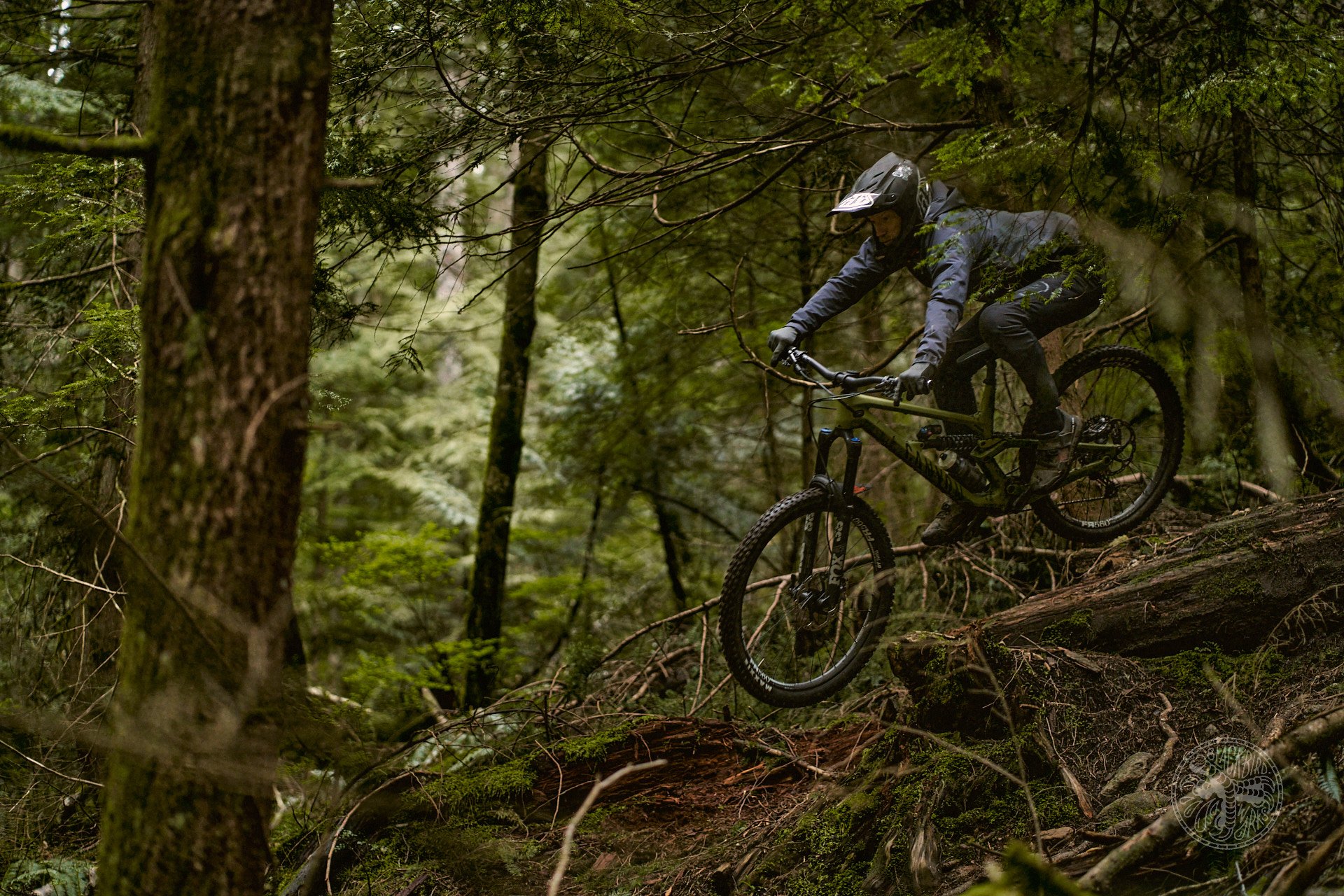
Deniz looking at the same log and stump differently. Photo - Deniz Merdano
When comparing the downhill ride of the Spectral and the Torque there was one situation where the difference between the Spectral and Torque really became a factor. In most situations the Spectral wasn’t necessarily slower than the Torque. For example jumps and g-outs and even steeps were totally fine on the Spectral as long as you kept the suspension stiff. When the trail became fast, steep and rough the difference between the bikes was night and day and the Torque holds its line and preserves composure much better. As the Spectral leans forward into its shorter travel fork and gets knocked around, I would find myself reaching for a little brake and then watch my buddies on their larger bikes pull away. Obviously if you are all about pushing hard or racing Enduro then this is going to make a big difference to you. Coincidentally World Cup DH rider Dakota Norton very recently said it this way when talking about this year's Vallnord World Cup track on a Vital podcast. When talking about why some of the riders (for example Loic Bruni) looked like they were running their suspension softer than usual he said that the combination of high speed, big holes and steepness eats travel. Sooo, the biggest difference between the Spectral and the Torque is that the Torque allows you to eat more!
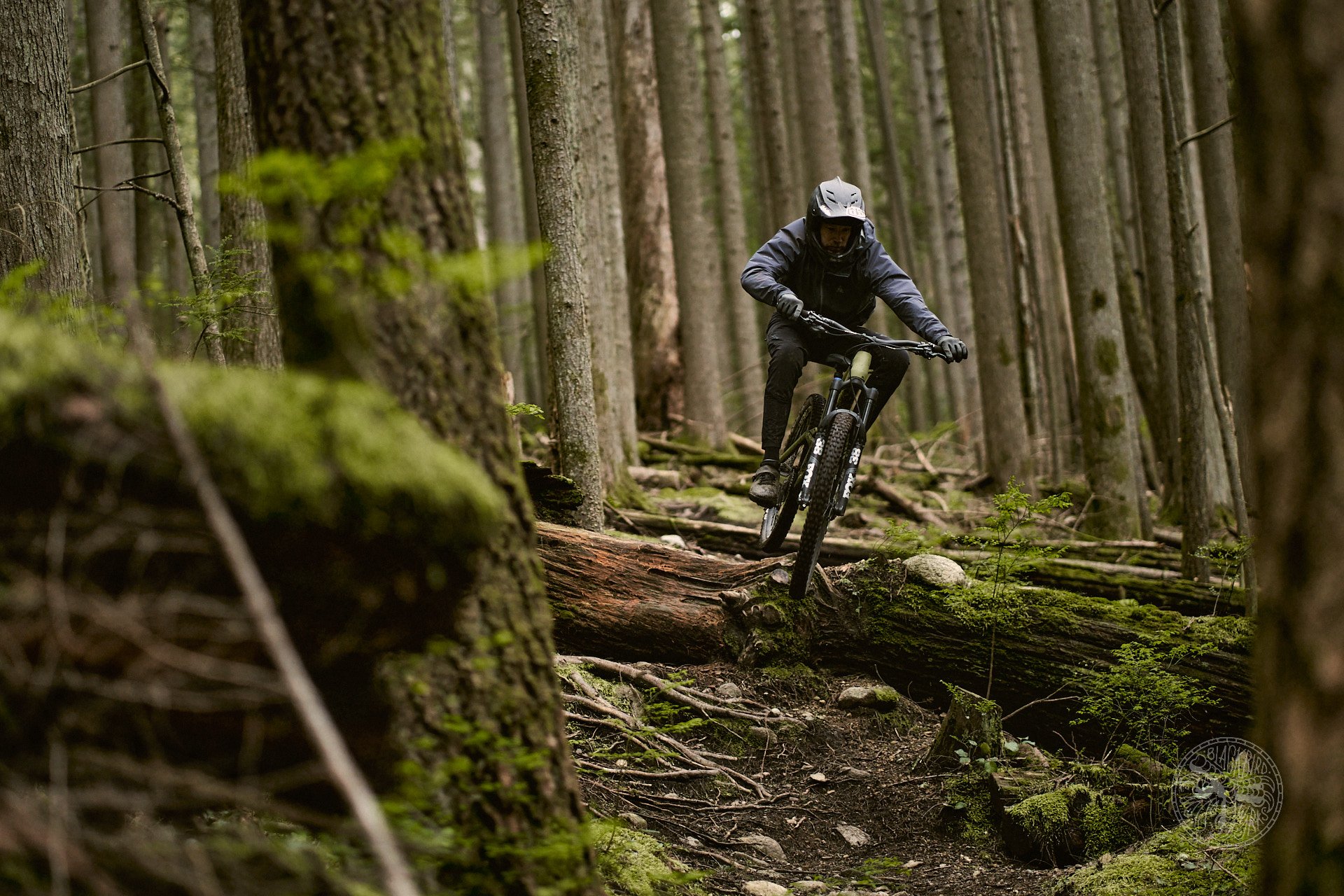
Basically doing a table top here... Photo - Deniz Merdano
Wrapping it up.
Both these bikes provide stellar value. You get an excellent ride right out of the box because everything down to the tires is well chosen despite them comparing favourably to bikes costing twice as much. I think Canyon is going to sell a lot of Spectrals as this bike is a very supportive, agile bike that can be ridden fast on even harsh terrain if you are willing to hang it out there. If the Spectral Mullet is a sports car then the Torque Mullet is a lifted ¾ ton pick-up. The Torque is more of a niche bike (especially since the release of the new Strive) but it is very good at what it is intended for. Even at the extremely competitive price the Torque has everything you need to put in some bike punishing days on your favourite gnar gnar trail or bike park.
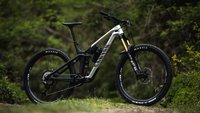
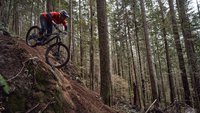

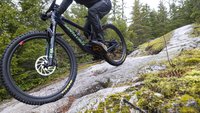







Comments
finbarr
1 year, 8 months ago
I really enjoyed this article. It was well written but also great to read as this is a decision that many of us face. Great to hear your thoughts.
Reply
Mike Wallace
1 year, 8 months ago
Thanks. Yes, the Spectral especially is a bike that appeals to a huge range of riders. I had a lot of different folks approach me and ask about it.
Reply
Ripbro
1 year, 8 months ago
This comment has been removed.
Zombo
1 year, 8 months ago
Great spec and price on both these bikes. Chainstays are a little short for my taste but Canyon is killing it overall. I would assume you need a lot of disposable income to pay double for the equivalent Bronson.
Reply
Perry Schebel
1 year, 8 months ago
that you could have both these bikes for the price of a (not quite top spec) bronson IS certainly eye opening.
Reply
Cooper Quinn
1 year, 8 months ago
Building a quick cart on Canyon.com, the CF8 is gonna cost you north of CAD$7,300 to get on your doorstep, unassembled. You're either using your time (which has a value), or paying a mechanic to build it from there.
The Bronson Mike tested is many things, but "equivalent" isn't one. It was an XO1 AXS CC Reserve, and hardly a fair comparison on price. Spec wise, an XT level Bronson *is* more expensive, but a GX level build can be had for US$6,300, or XT for US$7,400.
So yes, the price is different, and yes you need more disposable income for Bronson, but not double. (and, yes, you do need a lot of disposable income for a top tier build these days... the prices are eyewatering).
Reply
Pete Roggeman
1 year, 8 months ago
All good points. The D2C brands are getting better at bridging the gap btwn the service you get at retail and what happens when you need help but didn't buy from a shop. And Canyon in Canada works with Velofix to help out their customers. But over time, there's no question you can run into issues and need support whether it's for a dropper post or something else. None of that is reflected in the sales price but the cost will differ depending on the person - mechanical know how, access to parts and a shop you like, etc.
Reply
Cooper Quinn
1 year, 8 months ago
I mean no argument, I just don't think its a fair 1:1 comparison between D2C brands and something from your LBS.
They both have pros and cons - it depends on a lot of factors whether or not that "price difference" should be as big a differentiator as some people want to make it out to be.
Reply
Mike Wallace
1 year, 8 months ago
The Spectral and the Bronson are equivalent in so many ways though. Of course Santa Cruz quality is top notch, AXS is nice and carbon wheels don’t need as much truing etc but if you were to race them back to back on an Enduro stage I think the results would be near identical. So I guess what I am saying is that the Canyon is an amazing alternative.
Reply
Cooper Quinn
1 year, 8 months ago
Oh, I don't disagree with any of that. I just don't think its fair to say "the Bronson is twice as expensive as this" is completely fair.
And yeah... AXS isn't gonna make you faster on an EWS stage.
Reply
Justin White
1 year, 8 months ago
"The result was that the rebound ended up being so slow that I couldn’t get the bike off the ground, cased a small gap on my first ride and crashed."
This isn't really how rebound damping interacts with jumping. You should be keeping the bike loaded right to the end of the jump (or drop), so rebound damping won't have an effect until you're off the takeoff. If rebound adjustments somehow mess up a jump, you need to look at jump technique rather than the rebound damping itself: could be pre-jumping it and effectively bunny hopping over the lip of the jump instead of using it for boost, resulting in a case.
Could even do some semi-blind testing by having someone else spin the dials and then you try the same jump over and over. I think you'll find that rebound damping doesn't affect* a jump that is hit with good technique.
* Unless there is a super janky runup and bad damper settings affect traction or balance and don't let you hit the jump with enough speed or in the right direction, but that could be rebound too fast OR too slow.
Reply
Please log in to leave a comment.